EUGENE STUDIO /
Eugene Kangawa:
Power of Imagination
Part 1/3
2 June – 5 August 2023
The show takes place in MAKI Gallery and MAKI Collection at Tennoz I, Tokyo, with the addition of EUGENE STUDIO Atelier iii, the artist’s expansive atelier located in the outskirts of Tokyo, as a special venue.
Outline
MAKI Gallery is pleased to present “EUGENE STUDIO / Eugene Kangawa: Power of Imagination Part 1/3,” a solo exhibition by EUGENE STUDIO / Eugene Kangawa. The show takes place in MAKI Gallery and MAKI Collection at Tennoz I, Tokyo, with the addition of EUGENE STUDIO Atelier iii, the artist’s expansive atelier located in the outskirts of Tokyo, as a special venue. The first of a three-part, multi-year series titled “Power of Imagination,” this exhibition is an extensive exploration of the artist’s practice, featuring a wide range of new works as well as works on loan.
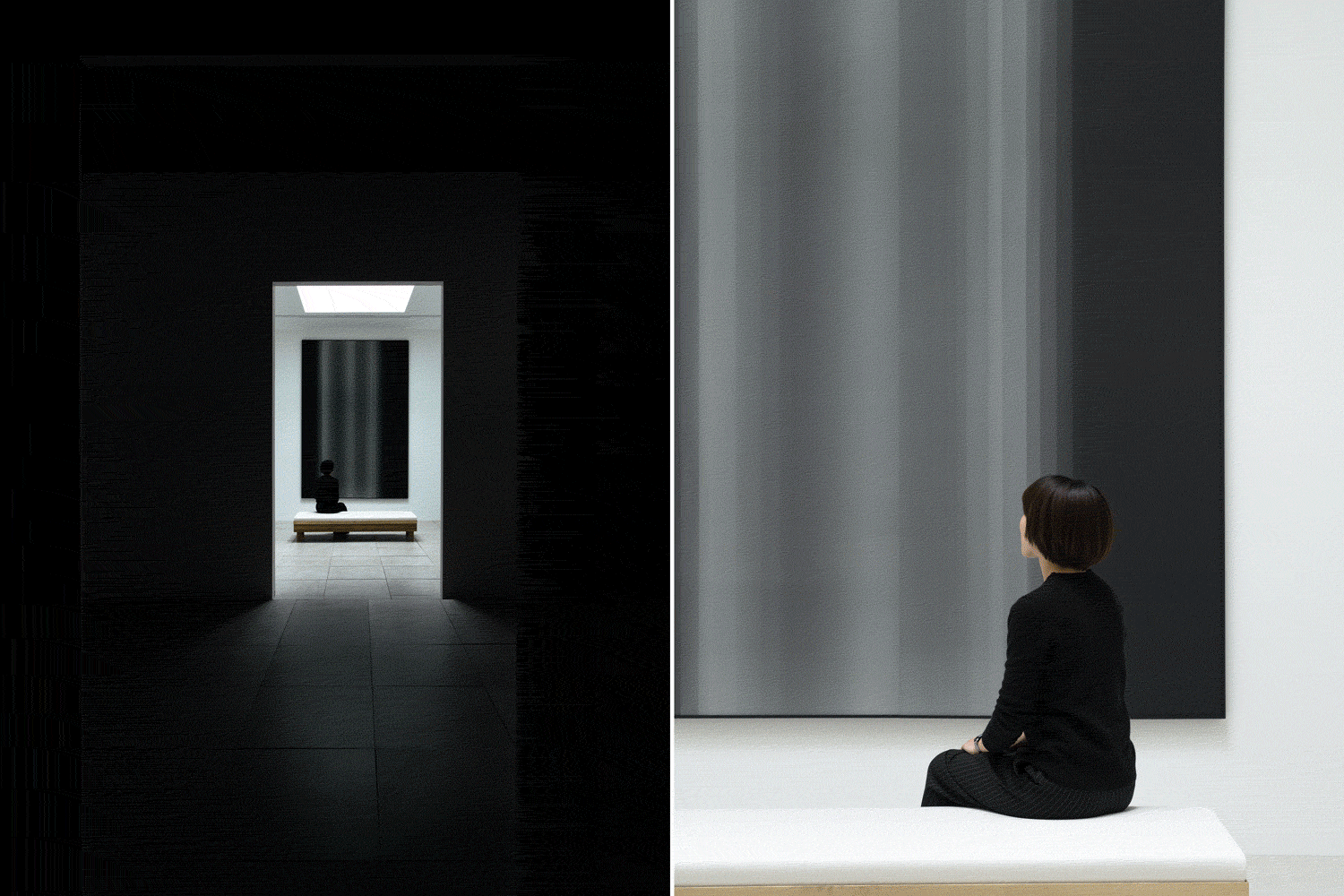
Born in the United States in 1989, Eugene Kangawa is an artist primarily known for his paintings and installations who has led a successful career in both Japan and abroad. Most notably, with his exhibition “EUGENE STUDIO After the rainbow,” he became the youngest artist in history to receive a solo show at the Museum of Contemporary Art Tokyo, a prestigious institution which has held retrospectives on the likes of Yayoi Kusama and Yoko Ono in the past. “After the rainbow” was incredibly well-received and made a powerful impact, as visitors waited for up to several hours to gain entry into the exhibition. All of the exhibited works, with the exception of those in the artist’s collection, were later acquired by various collections around the world. “Power of Imagination” is titled after one of the key concepts of “After the rainbow.” Through the cooperation of Kangawa’s many collectors, the exhibition’s multifaceted and multidimensional works lead us on a philosophical journey and continue to expand upon the experimental endeavors of the artist’s past shows.
Five separate series, including one new body of work, are exhibited at MAKI Gallery: Light and shadow inside me, Image/Imagine #1 man, Goldrain, the White Painting series, and the Rainbow Painting series. (Some exhibited artworks may be subject to change during the exhibition period.)
Information/Access (MAKI Gallery / Tennoz, Tokyo)
EUGENE STUDIO Atelier iii

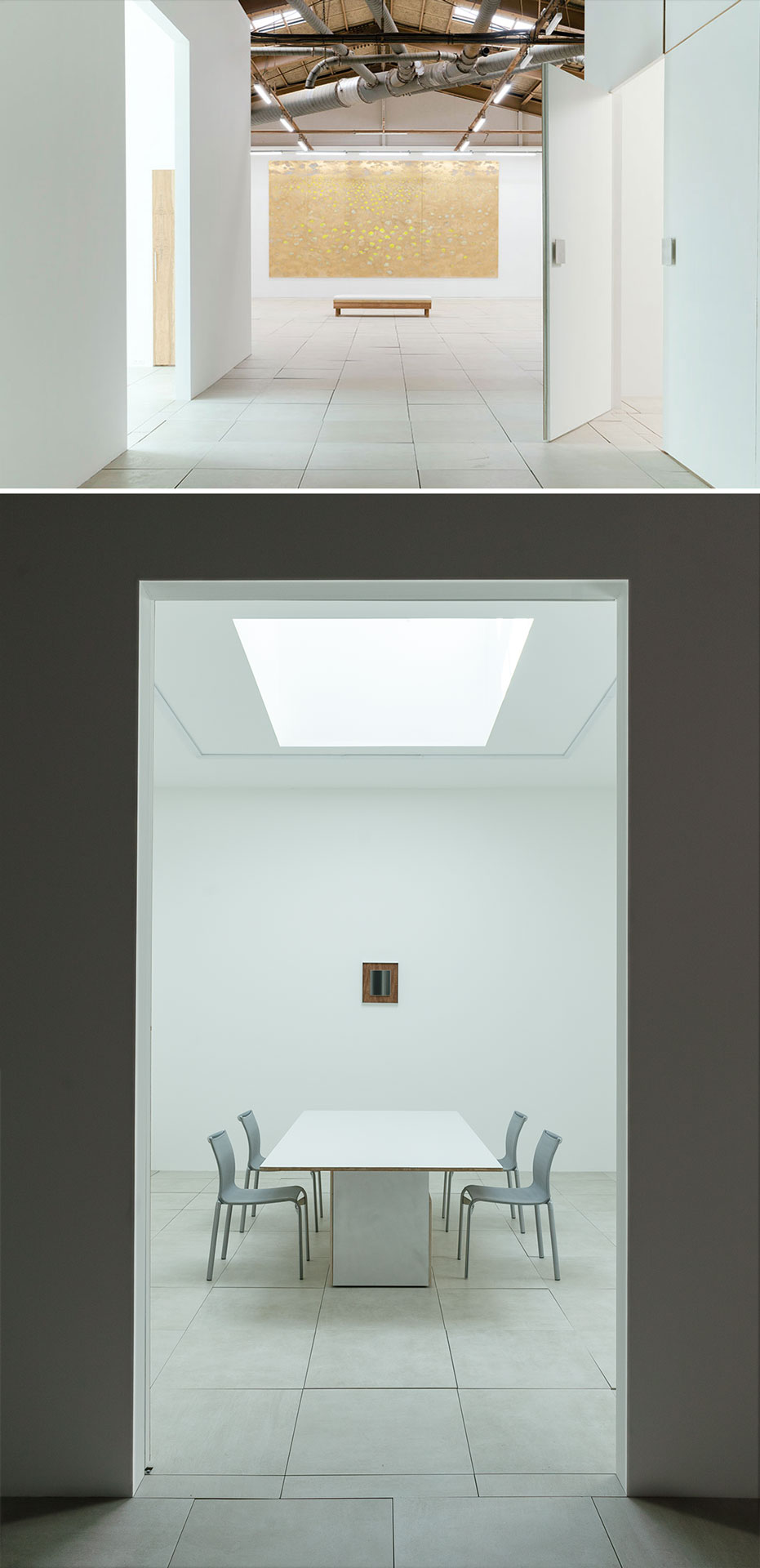
Left: Yellow flower field drawing, 2021
Oil, gouache, grease pencil on brass, 305 × 600 cm
Right: EUGENE STUDIO Atelier iii
Top: Yellow flower field drawing, 2021
Oil, gouache, grease pencil on brass, 305 × 600 cm
Bottom: EUGENE STUDIO Atelier iii
2. Special Venue: EUGENE STUDIO Atelier iii
Notably, EUGENE STUDIO / Eugene Kangawa’s atelier, located in the outskirts of Tokyo and spanning over 700 square meters, serves as a special venue for the exhibition with a limited number of groups allowed entry per day by appointment. The same atelier, which has served as the artist’s base since 2020, was designed and constructed by the artist and studio themselves, including the overall spatial design, doors, and most of the furniture. By reusing materials from previous projects, the atelier has since become a medium for embodying the artist’s aesthetics and everyday life. The rooms illuminated by natural light and the vast spaces filled with paintings and installations offer a new viewing experience, where the relationship between a work and its surroundings is distinct from that of a museum or a gallery.
Details / Reservations
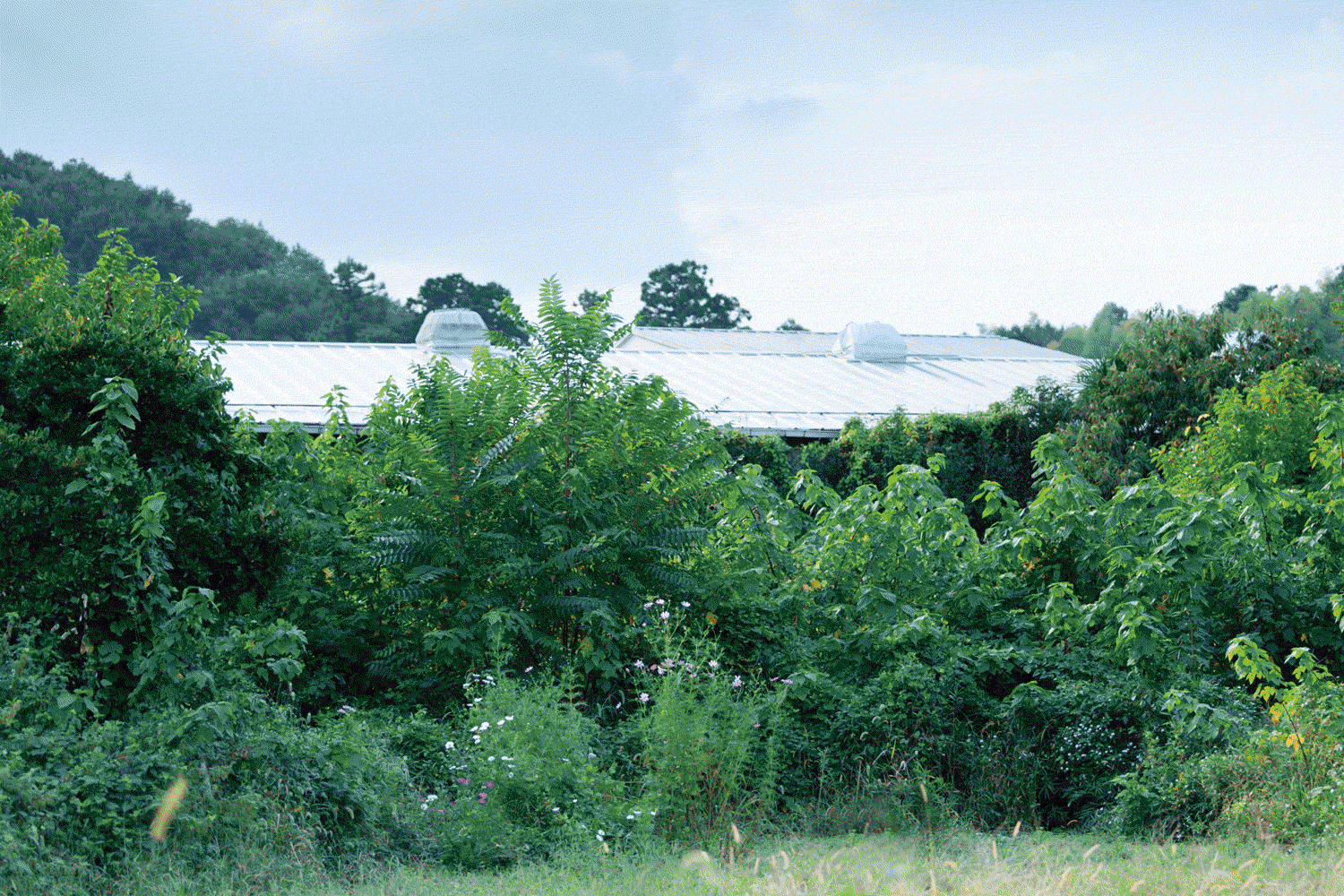
EUGENE STUDIO Atelier iii
Eugene Kangawa was born in the United States in 1989. Past shows include the solo exhibition “EUGENE STUDIO After the rainbow” (2021-22) at the Museum of Contemporary Art Tokyo, the group exhibition “de-sport” (2020) at the 21st Century Museum of Contemporary Art, Kanazawa, the solo exhibition “1/2 century later.” (2017) at the Shiseido Gallery, Tokyo, and the group exhibition “89+” (2014) at the Serpentine Gallery, London.
The artist has also participated in, or was invited to participate in, various research and development projects in such fields as artificial intelligence, agriculture, and biotechnology. These early activities were summarized in 2017 in the book The Age of Art × Technology (written by Daisuke Miyatsu, published by Kobunsha Shinsho), which cited EUGENE STUDIO / Eugene Kangawa as one of the four leading Japanese artists amongst teamLab and others.
In addition, two short films by the artist, released in the United States in 2021, have been included as official selections or won awards at multiple international film festivals, such as the Brooklyn Film Festival, the Urbanworld Film Festival, the Pan African Film Festival, the Houston International Film Festival, and the Rhode Island International Film Festival, which includes several Academy Award-qualifying festivals.
EUGENE STUDIO website
Instagram (EUGENE STUDIO official)
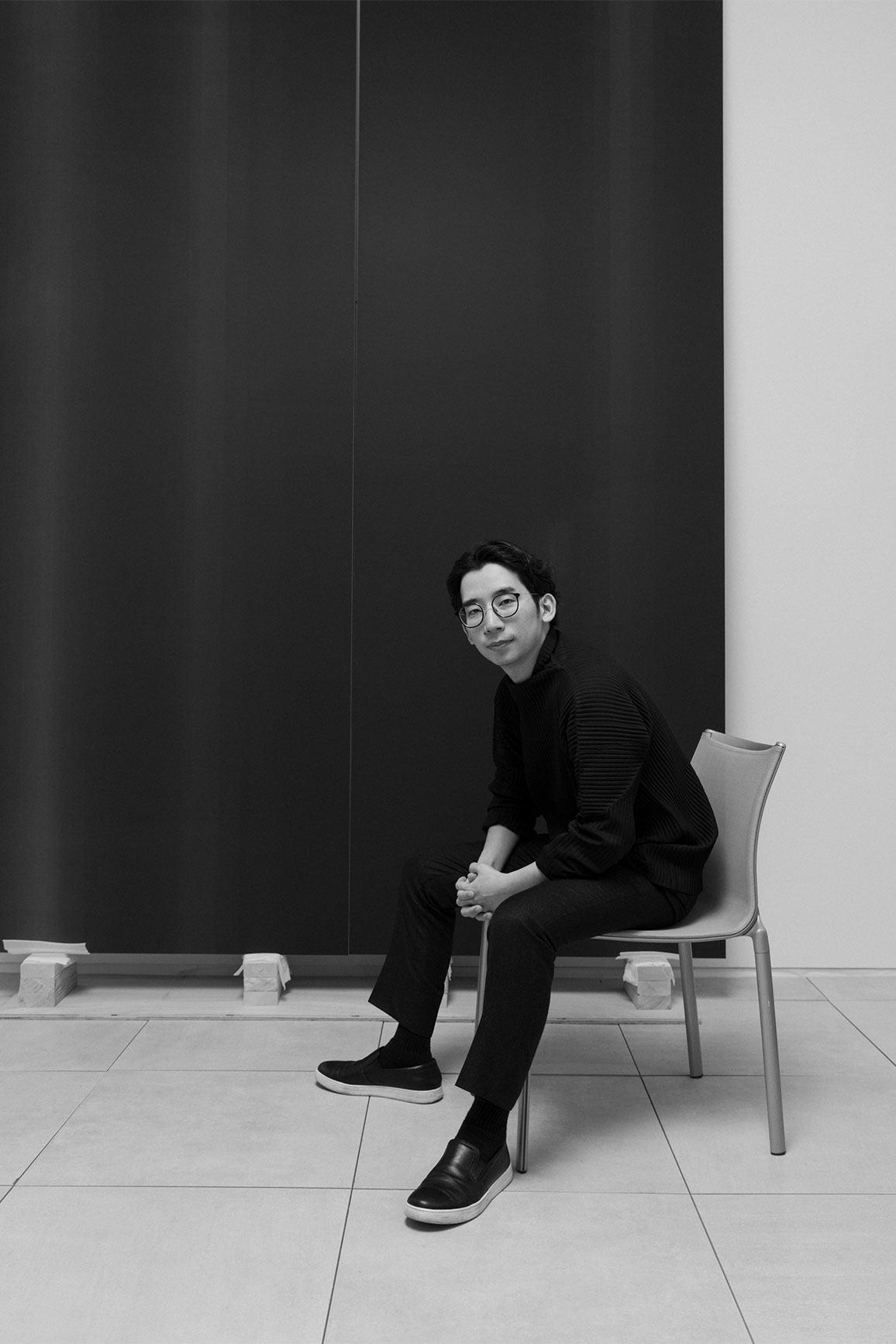
Eugene Kangawa
Photo: Asuka Yazawa © 2023 Eugene Kangawa

Fig. 1
Light and shadow inside me, 2023
300 × 202 cm
Gelatin silver print (photogram)

Fig. 1
Light and shadow inside me, 2023
300 × 202 cm
Gelatin silver print (photogram)
Light and shadow inside me
2022–, Gelatin silver print (photogram) / 2021–, Aqueous dye on paper
Light and shadow inside me is a signature series of two-dimensional works by Kangawa. In the original green works (Fig. 2), paper is coated on one side with water-based dye, folded and fixed to form a polygonal prism, and exposed to sunlight for several weeks. Each face of the prism receives a different amount of sunlight depending on the direction of the sun’s rays, resulting in some areas fading faster than others to form a gradation of color. The fading process can be described as a “progression” in the sense that the dye changes color, or a “regression” in the sense that it brings the paper back to its original color. Furthermore, in their use of sun exposure, works from this series can be considered both paintings and photographs. The understated works, created with only their own light and shadows, offer a new perspective on the relationships between light and shadow, subject and medium, painting and photography, and beginning and end.
While the series is most known for its use of bright green dyes, “Power of Imagination” presents a new variant of black-and-white works (Fig. 1) which use silver halide photographic paper. Like the bright green works that precede them, the black-and-white works are created by folding whole sheets of paper into polygonal prisms. However, the artist then takes the folded photographic paper into a darkroom and directly exposes it under light for several seconds. Due to their distinct materiality and monumental size, the works are more than just ordinary photographs—in fact, they generate an imposing presence akin to paintings. By reproducing the photographic mechanism of recording and measuring light with only the most basic elements, Light and shadow inside me questions the existing boundaries that define art.
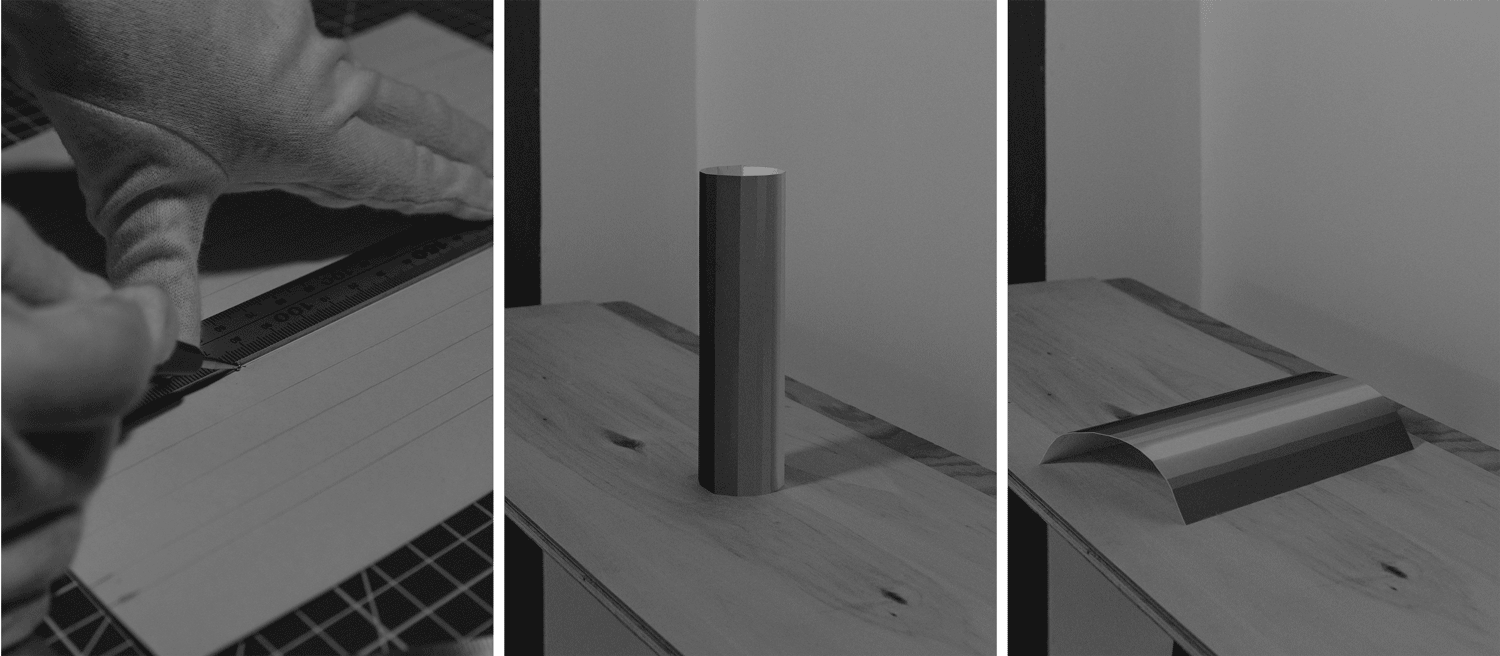
Fold the paper, shape it into a polygonal prism, expose it to light.
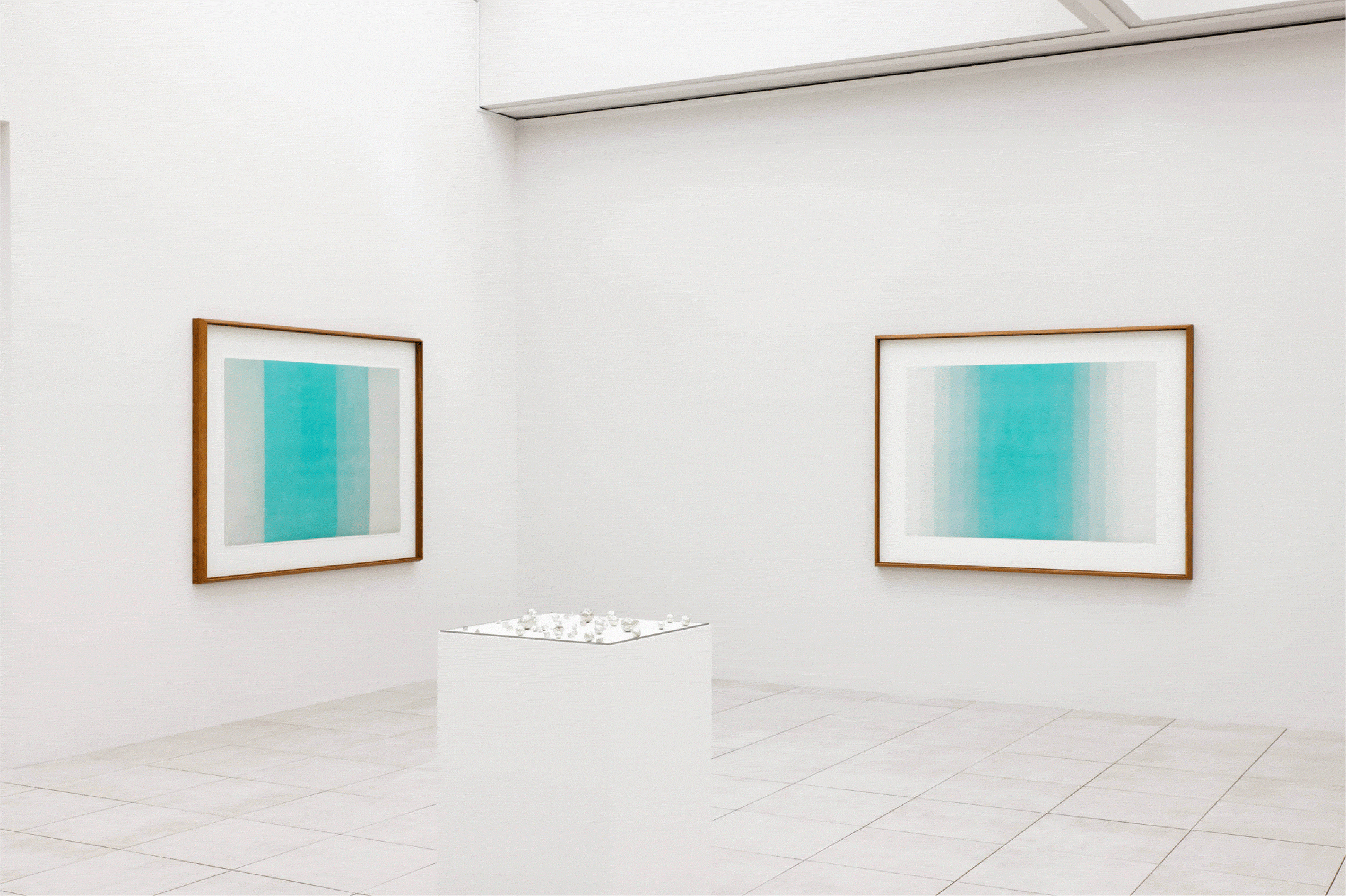
Fig. 2
Light and shadow inside me, 2021
Installation view: Museum of Contemporary Art Tokyo
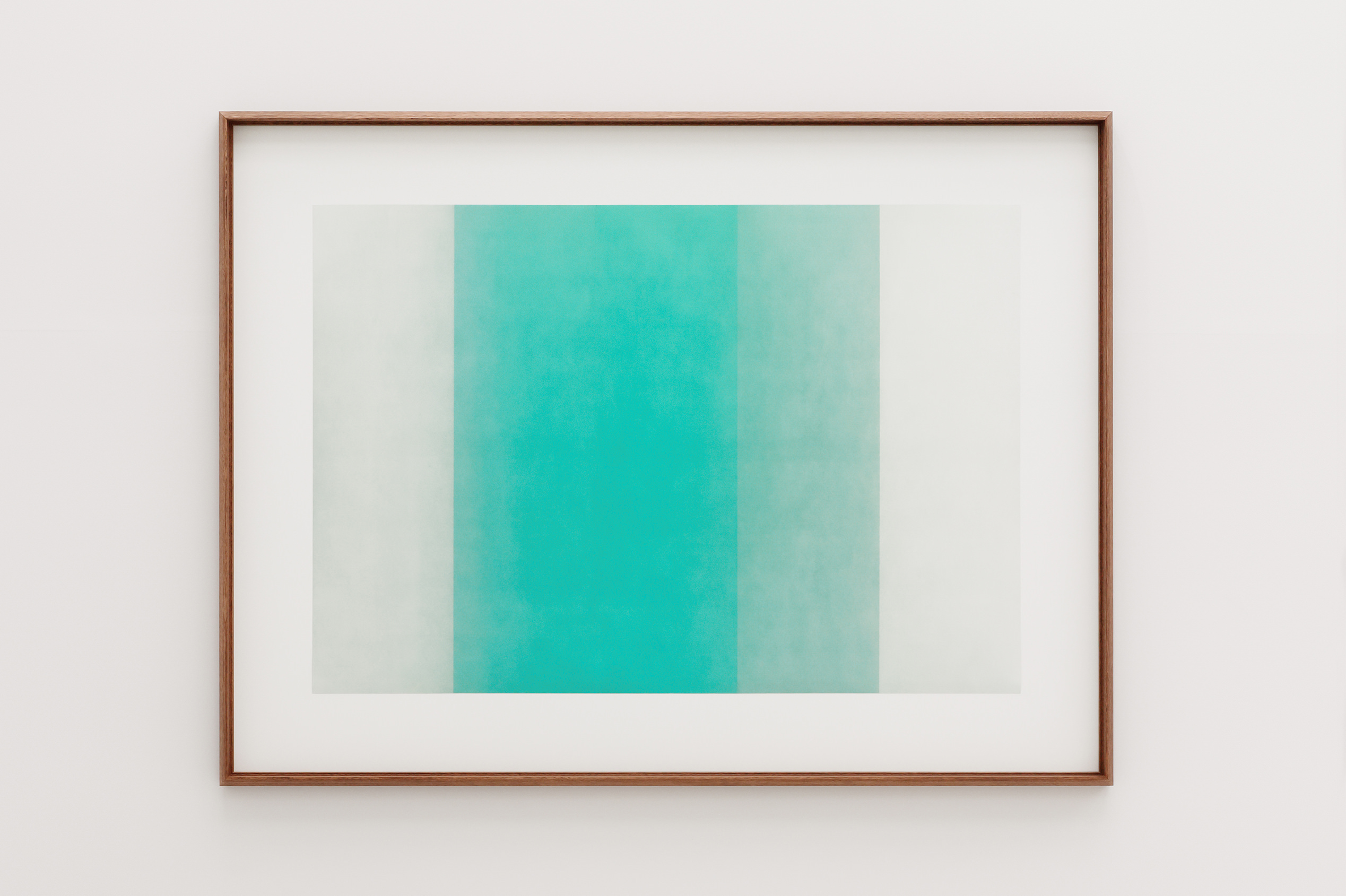
Fig. 2
Light and shadow inside me
07.21-08.23 in my house, in Tokyo, 2021
Aqueous dye on paper
107.6 × 155.7 cm
Private collection

Fold the paper, shape it into a polygonal prism, expose it to sunlight.
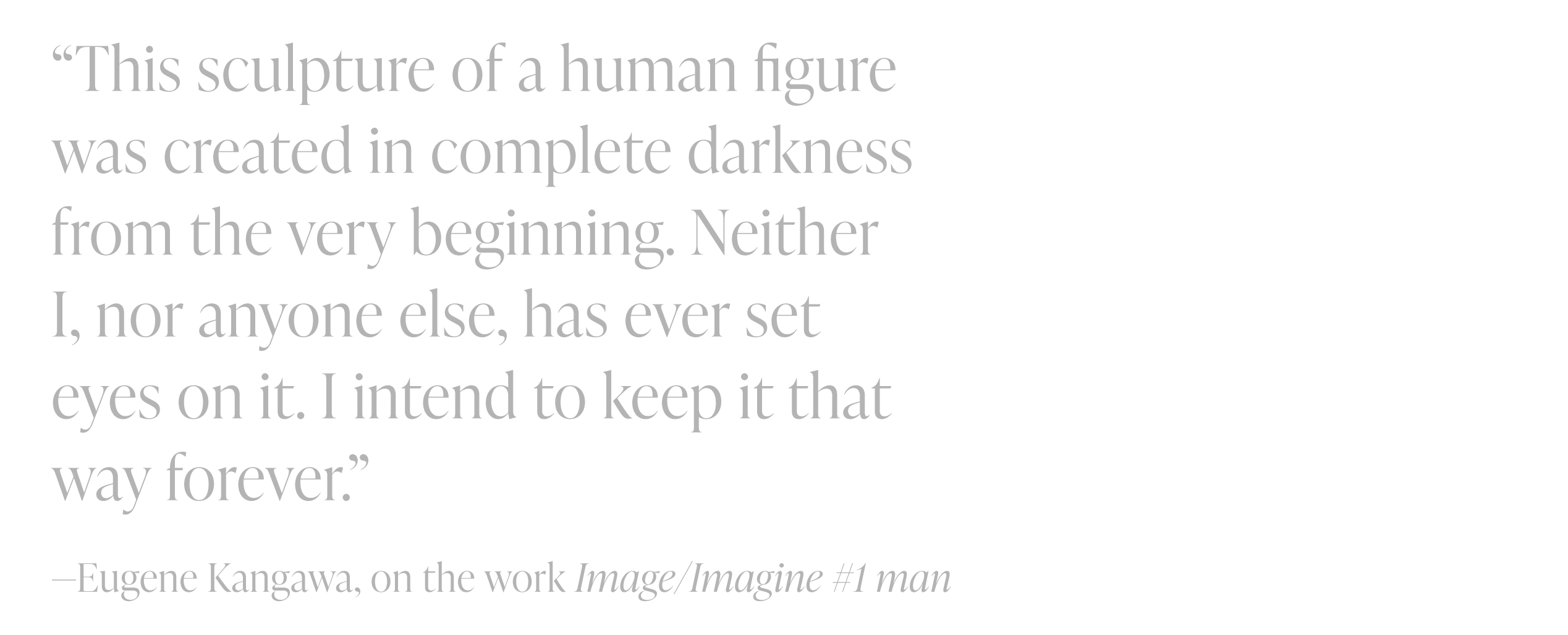
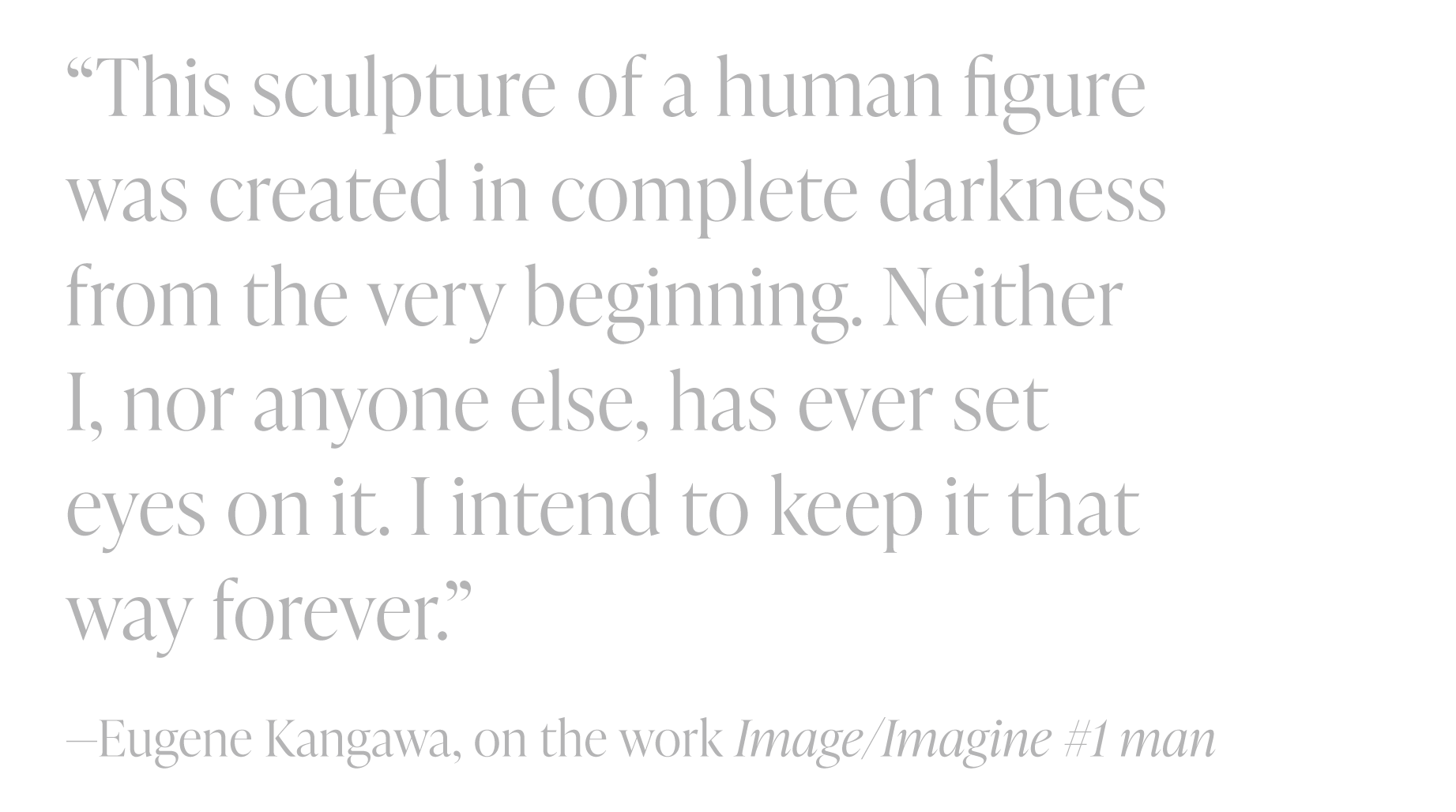
Image/Imagine #1 man
EUGENE STUDIO / Eugene Kangawa
Image/Imagine #1 man, 2021
Statue
Taguchi Art Collection
© 2021 EUGENE STUDIO / Eugene Kangawa
Image/Imagine #1 man is a sculpture of a human figure, created by hand, that is both executed and exhibited in complete darkness; no one, including the artist, has ever seen—or will ever see—its true form. One by one, visitors enter the unlit room and experience the work through the sense of touch. The work, which garnered a great deal of attention when it was presented at the Museum of Contemporary Art Tokyo, represents a new approach to the viewing experience and an expansion of possibilities for both the art creator and the art viewer. The Japanese title of the work, 想像 (“imagination” in English), is made up of the characters 想 (“imagine”) and 像 (“image” or “statue”), embodying how the work is a simple yet profound demonstration of the immense power inherent in the act of imagination.
* For safety reasons, Image/Imagine #1 man can only be experienced by one person at a time. We appreciate your understanding and cooperation.

Goldrain, 2019
Particles
Goldrain, 2019
Particles
Goldrain
2019
Particles
Goldrain is an endless stream of shimmering gold and silver particles that constantly changes in appearance before the viewer. To simply call it a kinetic sculpture is lacking—while the work obeys the rules of time and gravity, it refuses to submit to any artificial restraints and continues to move in a way unlike anything else, gently whispering the story of life through a repetitious cycle of birth and death. The serene space contains just enough energy to send the viewer on a journey of deep contemplation.

Rainbow Painting series
Group portrait (Surrounded surging crowd of people), 2021
Oil painting on canvas with brush
292 × 788 cm
Private collection
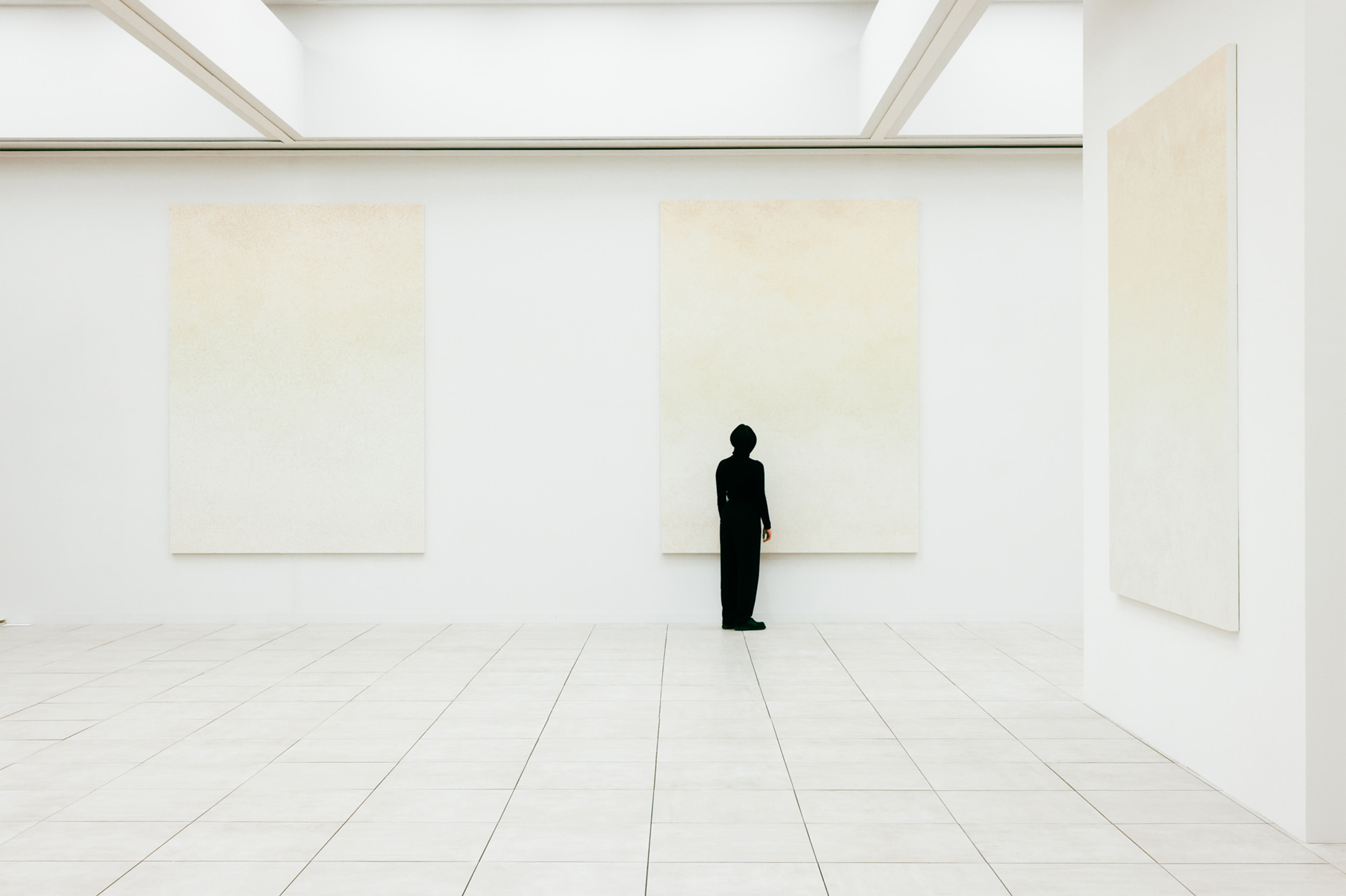
Rainbow Painting series
Left: Group portrait (Hitonoyo), 2021 / Oil painting on canvas with brush, 291.5 × 212 cm, Private collection
Center: Group portrait (Where are you?), 2021 / Oil painting on canvas with brush, 294 × 214 cm
Right: Group portrait (Rainbow), 2021 / Oil painting on canvas with brush, 244 × 184 cm, Private collection
Rainbow Painting series
2021–
Oil painting on canvas with brush
The Rainbow Painting series consists of "group portraits" executed in oil on canvas. While the artist's White Painting series takes on the theme of community through the accumulation of invisible marks, the Rainbow Painting series addresses the same theme through distinct brushstrokes that envelop the whole canvas. Countless imprints are layered atop one another, each symbolizing a single person. Although the individual brushstrokes vary slightly in color and shape, they come together to create intricate gradations that spread across the entire work. Whether the differences are considered significant or trivial is left to the interpretation of the viewer—however, the sweeping landscapes, realized by the aggregation of discrete marks, are undeniably beautiful. Faced with their collective power, one cannot help but feel a sense of hope for humanity’s future.
Rainbow Painting series
Group portrait (Hitonoyo), 2021
Oil painting on canvas with brush
291.5 × 212 cm
Private collection
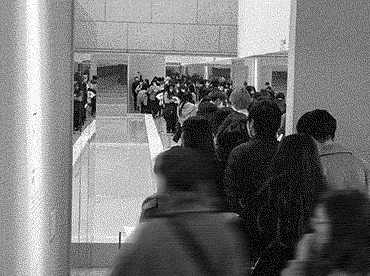
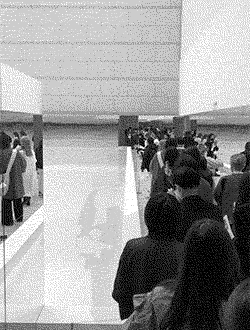
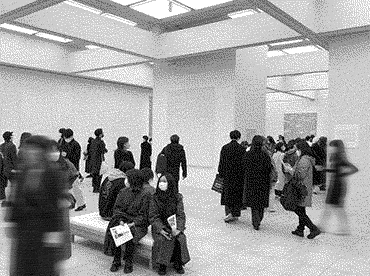
Photos of
the Museum of Contemporary Art Tokyo.
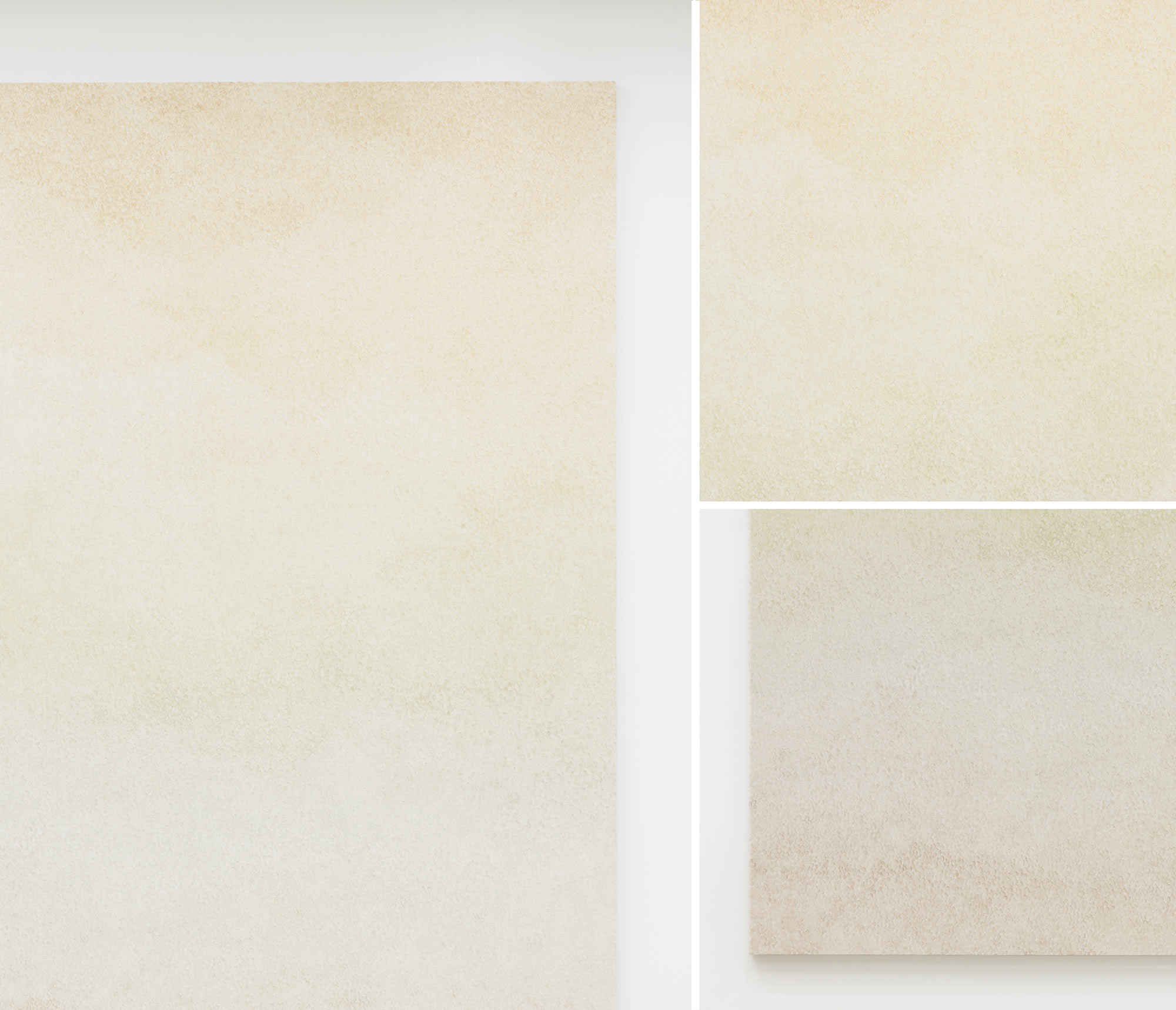
Group portrait (Where are you?), 2021
Oil painting on canvas with brush
294 × 214 cm
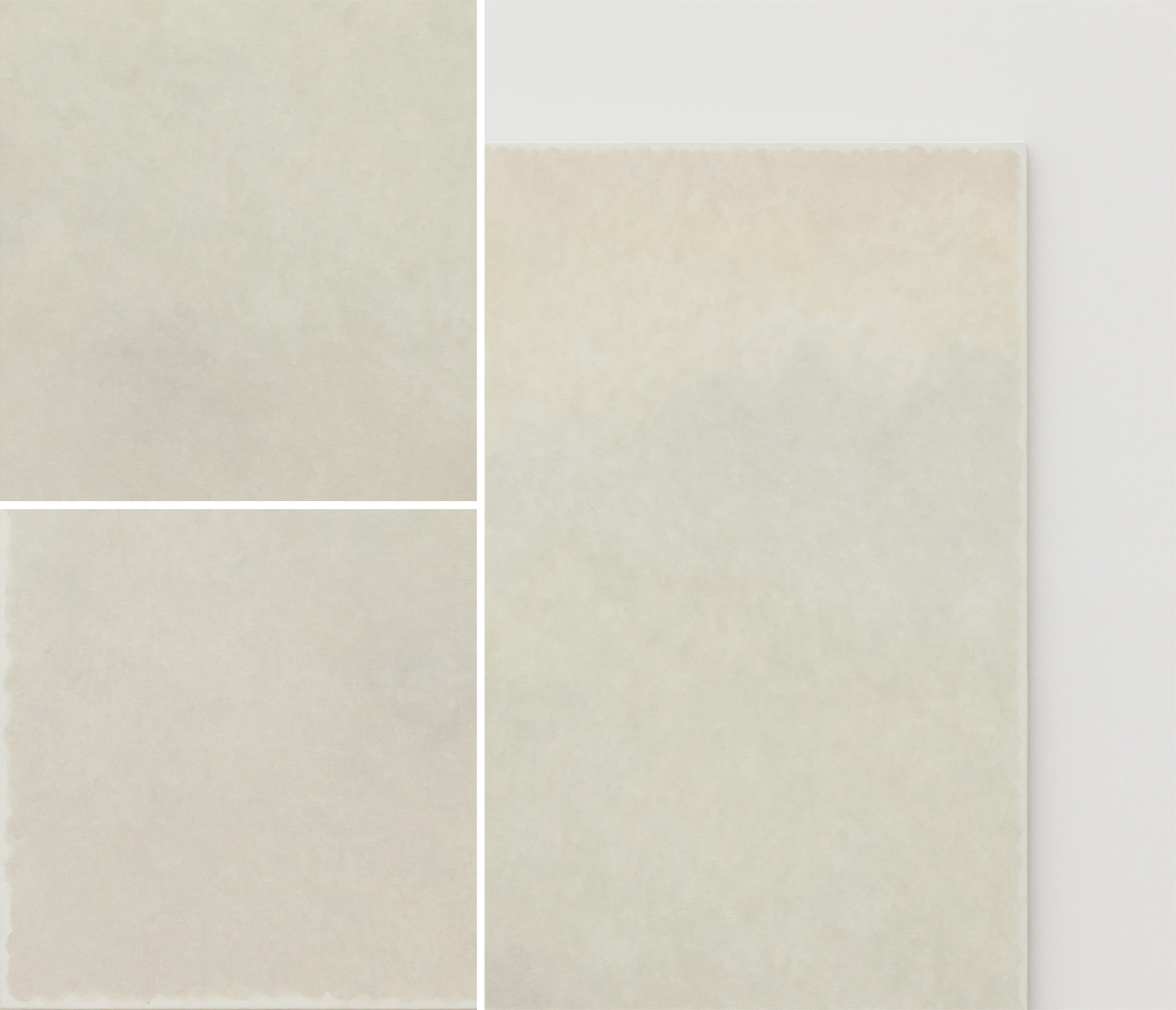
Group portrait (Mixed grey) #2, 2021
Oil painting on canvas with brush
116.7 × 116.7 cm
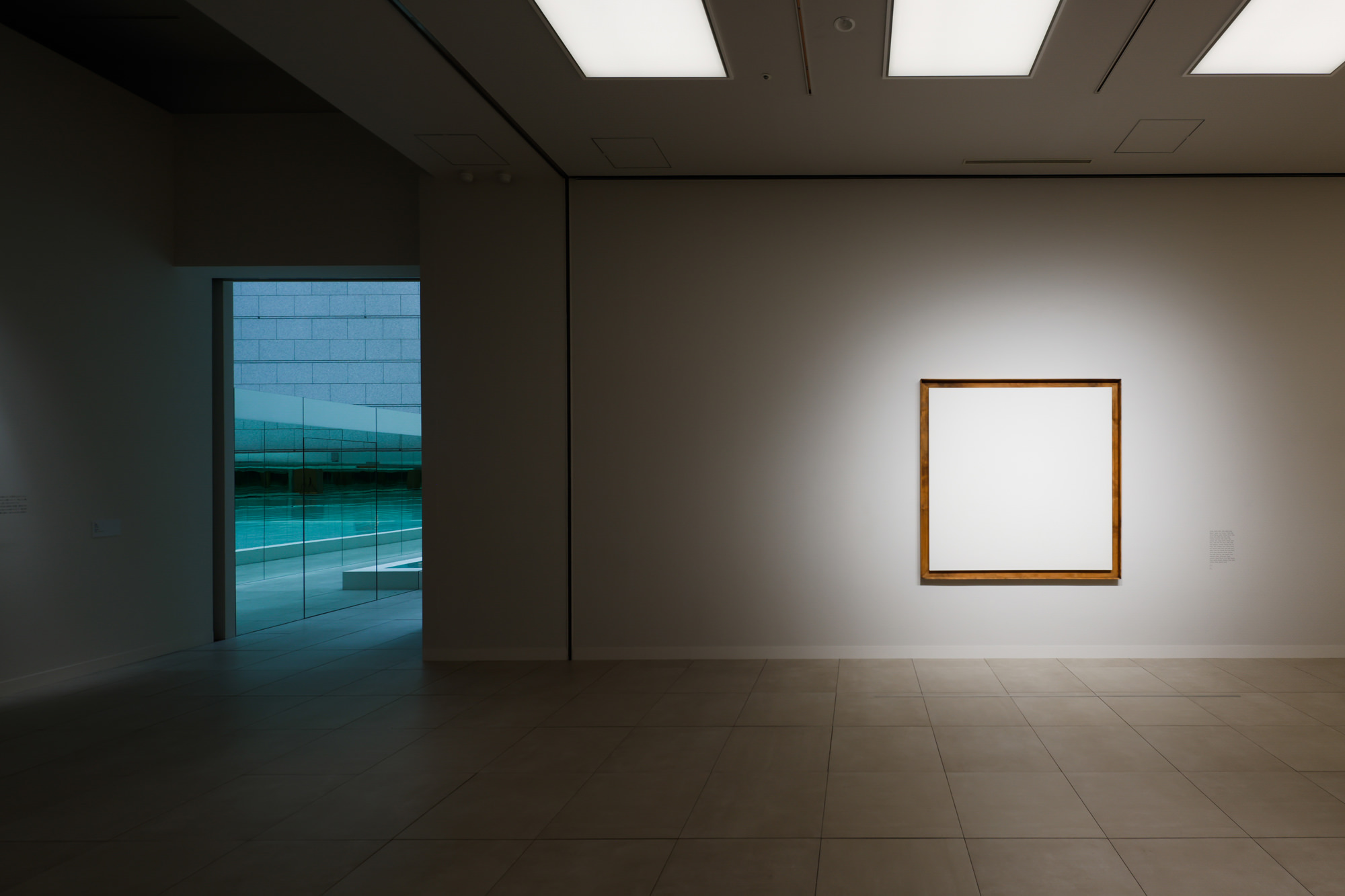
White Painting series (reference work)
Juliette, Sandra, Mitch, Wills, Gillies, Ergas, Asheron, James, Lilly, Thomas. P, Elias, Sofia, Victoria, Mackay, Jamin, Amelius, Prince, Cathy, Valerie, Keiny, Peter, Dona, Sam, Zaret, Christina, Laurencie, Owel, James, Kairy, Frances, Thom, Sugay, Marien, Kinbary, Kalen, Morry, Callen, Mut, Elen, Bruno, Peter, Daele, Clara, Benjamin, Charlotte, Michael, Ryan, Ina, Diego, Javia, Candelas, Robin, Rucaro, Daniel, Rumi, Benney, Sarah, Emily, Jack, Peter, Kevin, Safiya, Trisha, Eric, Danielle, Paul, Floyd, Alexis, Carlos, Nydia, Samantha, Daniela, Michael, Dom, Matt, Todd, Ava, Cailin, Melissa, Kirby, Alexandra, William, McGuiness, Liliana, Francisco, Daniel, Patricia, Anna, Dalia, Ricardo, Diana, Maribel, Barbara, Gabriela, Cristel, Kenia, Lorenzo, Gladys, Alberto, Carlos
2017
Canvas
160 × 160 cm
Private collection
White Painting series
2017–
Canvas
The White Painting series takes the form of blank canvases, upon which numerous people have planted kisses. Although the kisses are not visible, each work is titled after the names of the participating individuals, allowing the viewer to imagine the thoughts and emotions behind every kiss. Started in 2017, the series was previously realized through the participation of passersby encountered on the streets of cities in the United States, Mexico, Italy, and Taiwan. However, since the advent of COVID-19, the artist ceased creating new works in public spaces. Instead, as time passed, the White Painting series became a unique work of art that documents the immense impact this defining moment in history has had on our daily lives.
On the other hand, the participants of For a certain family, a subset of smaller works in the same series, are limited to a specific social unit—namely, a single family. These smaller-scale commissions are ongoing since 2018 and collected by various families around the world. Every time the family gains a member, the work is updated, and their name is added to the work’s title. The paintings stand as timeless portraits, embodying the eternal connection that binds a family together.
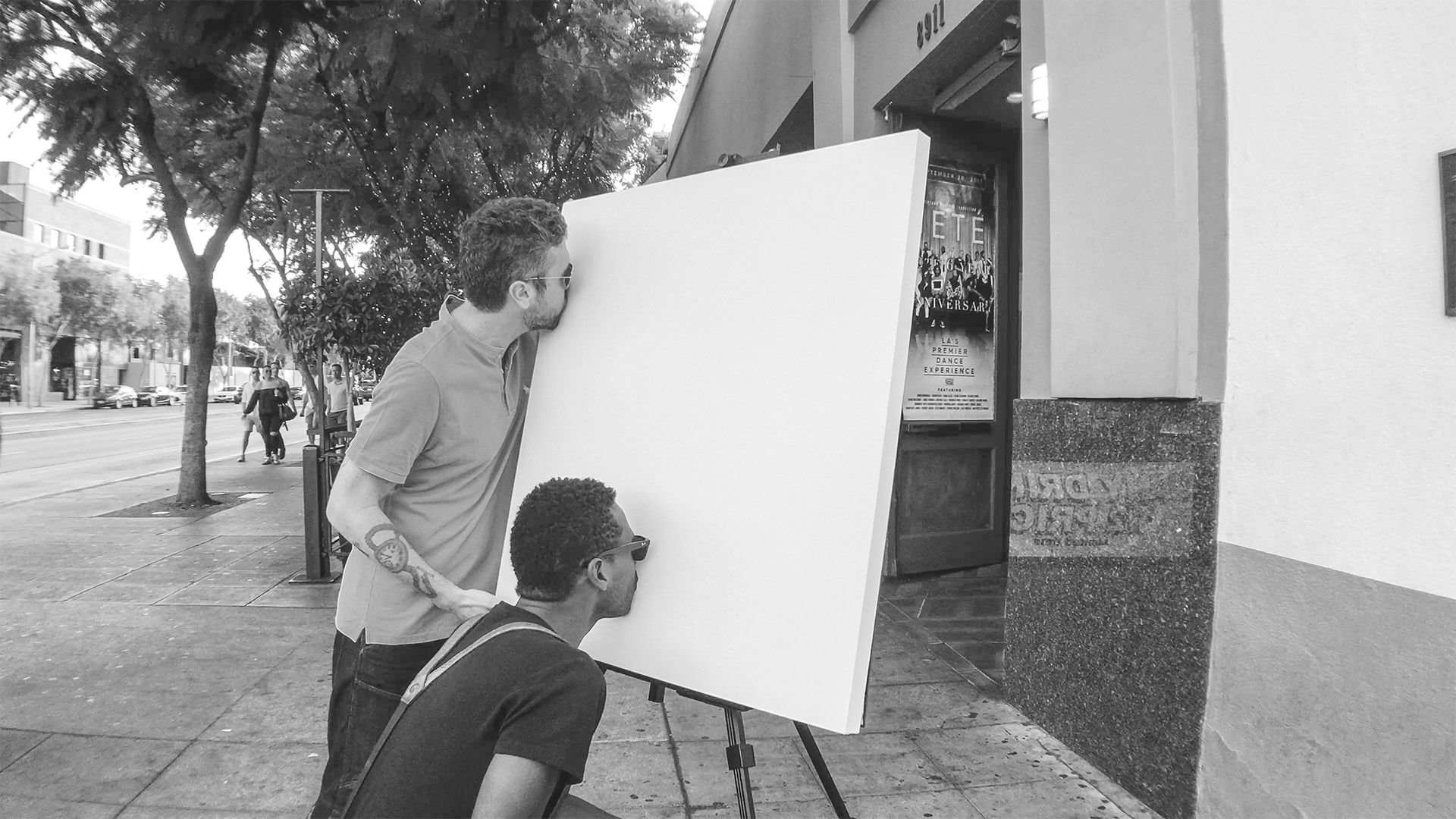
White Painting series
Still from video

White Painting series
For a certain family, 2019
Canvas
33.3 × 33.3 cm
Private collection
EUGENE STUDIO / Eugene Kangawa’s practice defies convention while maintaining deep roots in art history, inviting us to confront abstract concepts like love and fate. At the same time, the artist aims to infinitely expand our horizons by embracing and encouraging free thought. We invite you to explore the boundless possibilities of imagination, as presented by the artist’s diverse creative output.
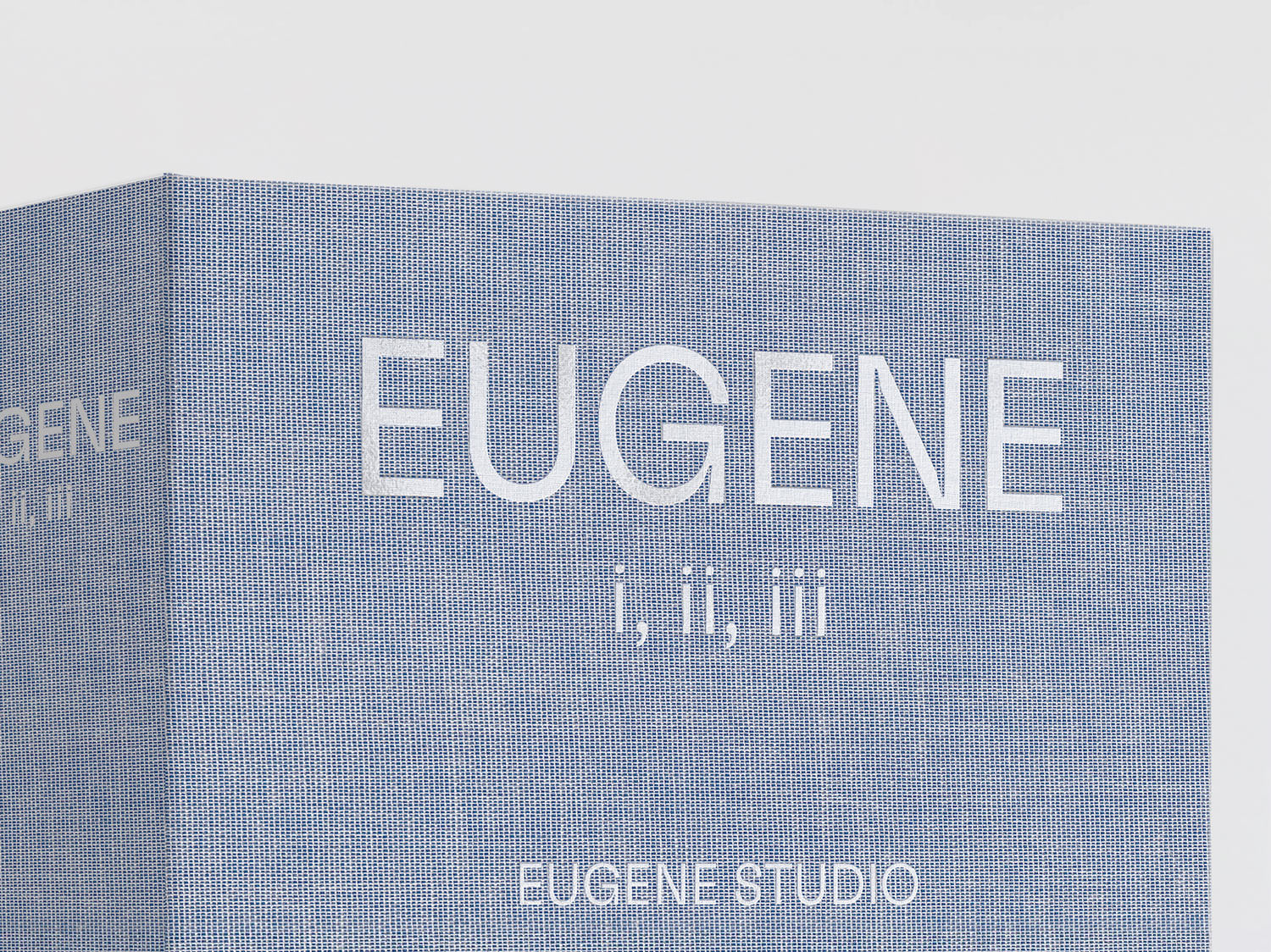
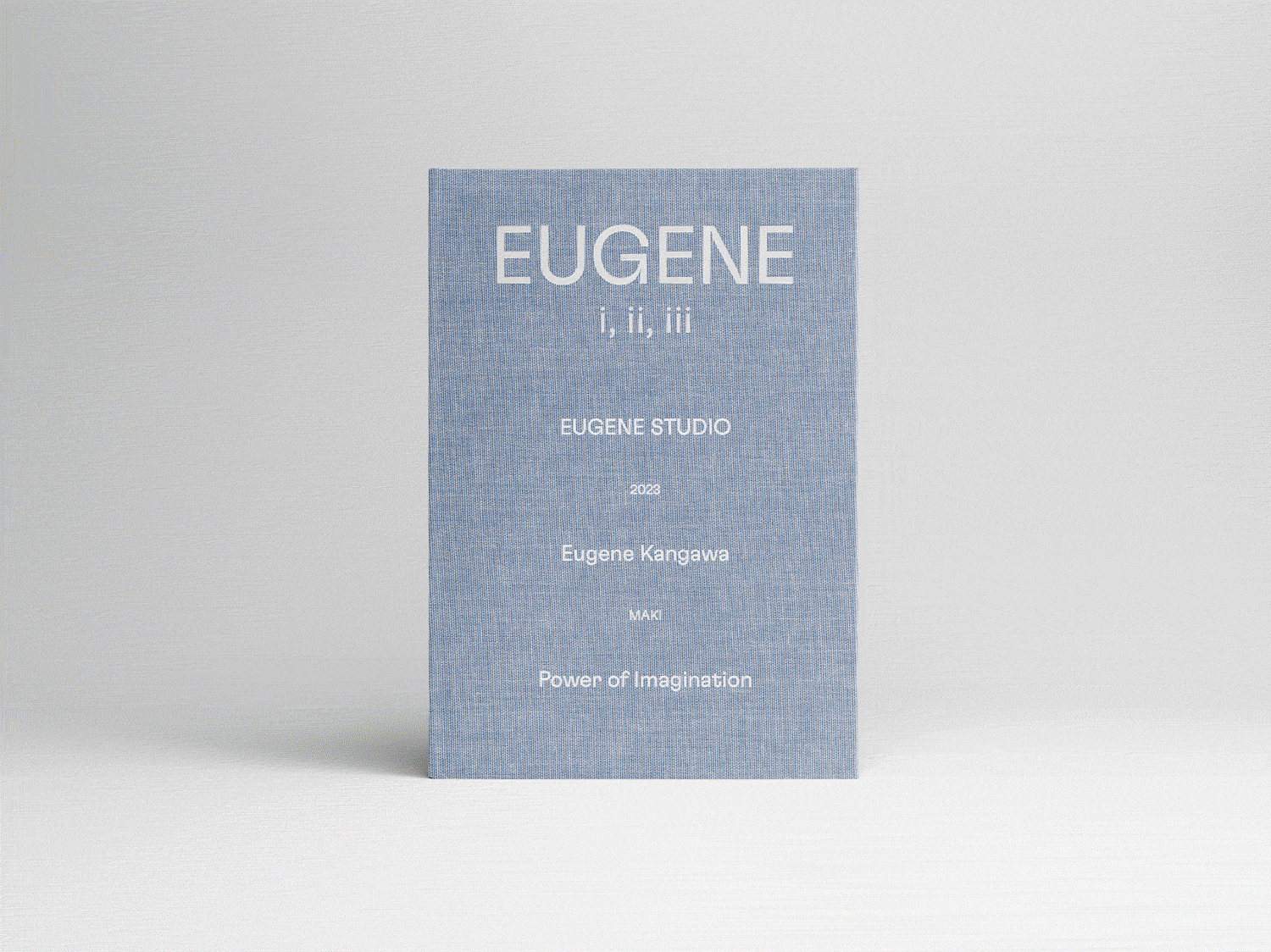
To commemorate the exhibition, MAKI Gallery will publish a three-volume catalog, with each volume dedicated to documenting specific bodies of work in the artist’s oeuvre. Also included are conversations between Eugene Kangawa and MAKI Gallery director Masahiro Maki, as well as Kangawa’s own words excerpted from past lectures, interviews, and talks, which provide a deeper look into the artist’s ideas and academic pursuits. The books serve as a valuable companion to the exhibition, so please make sure to check them out.
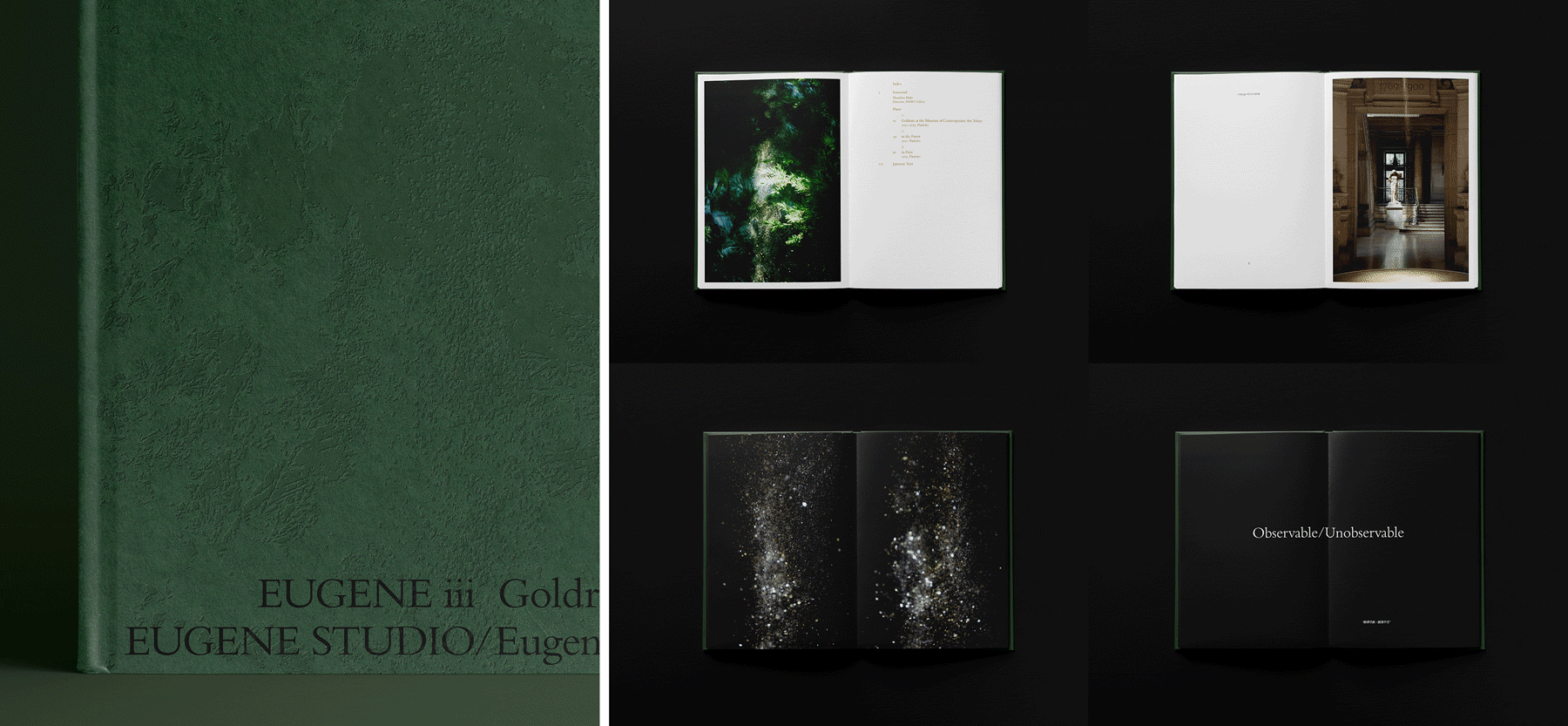
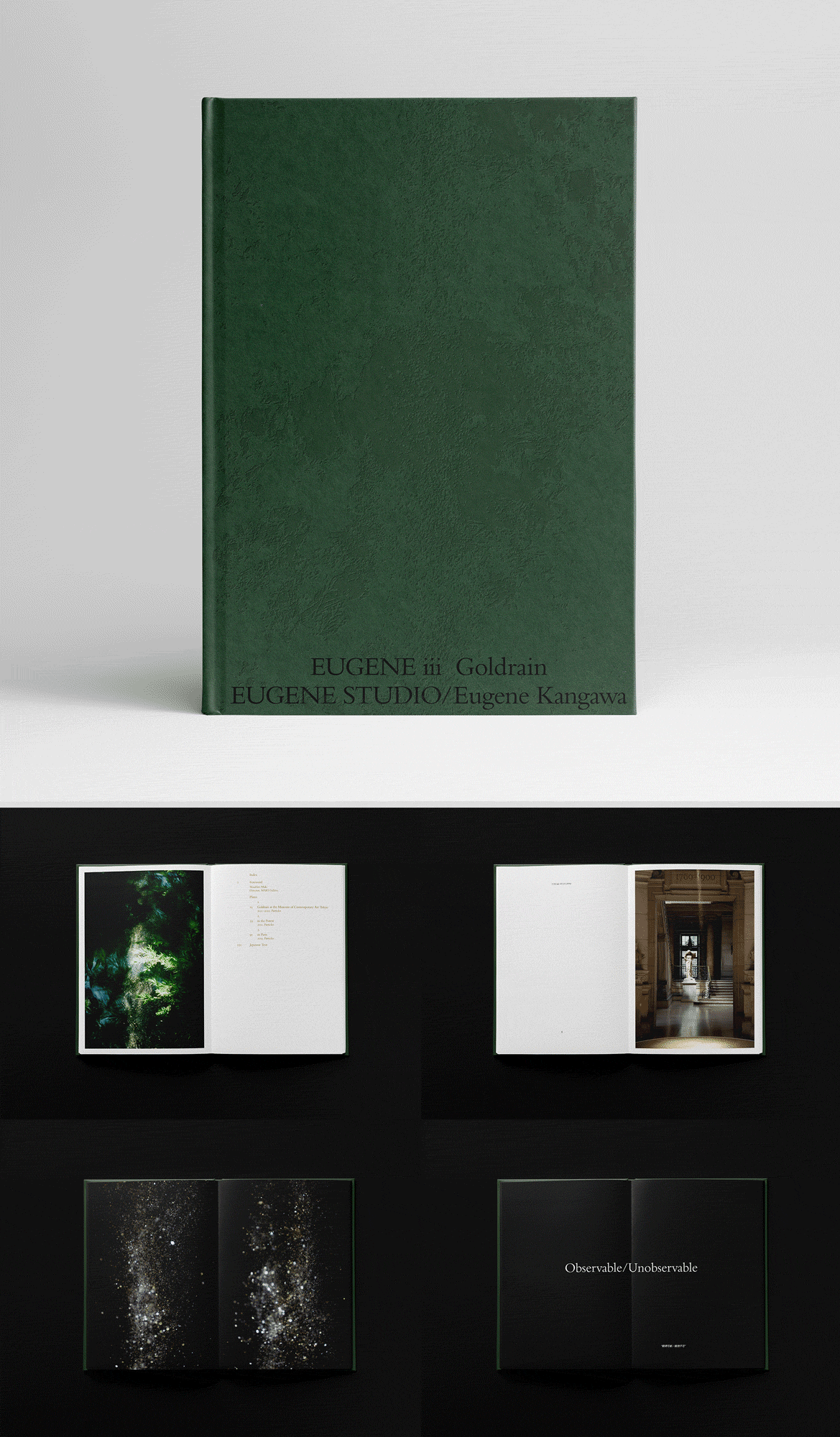
EUGENE iii Goldrain
This volume documents Kangawa’s signature sculptural work, Goldrain. The book includes dozens of full-color photographs taken at various angles and times of day, capturing the many nuances of a work that never looks the same, not even for a moment. The images are accompanied by specific words that Kangawa had in mind when he conceived the work.
Published in June 2023
Publisher: MAKI Inc. / MAKI Gallery
Size: 252 × 182 mm
Specifications: Hardcover / 128 pages
Languages: English, Japanese
List price: ¥3,960 (tax included)
Reservations can be made via the following link.
Nadiff (Official) *International shipping
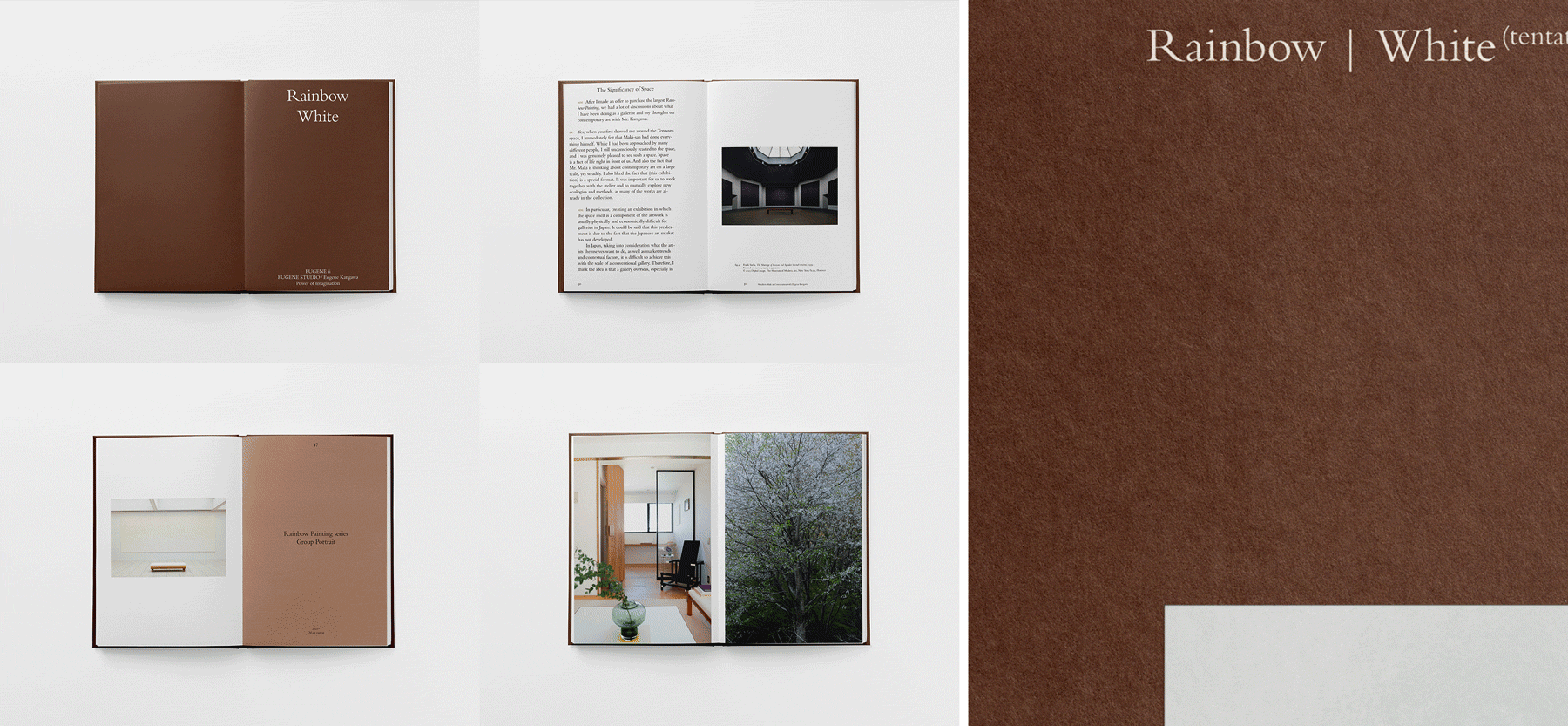
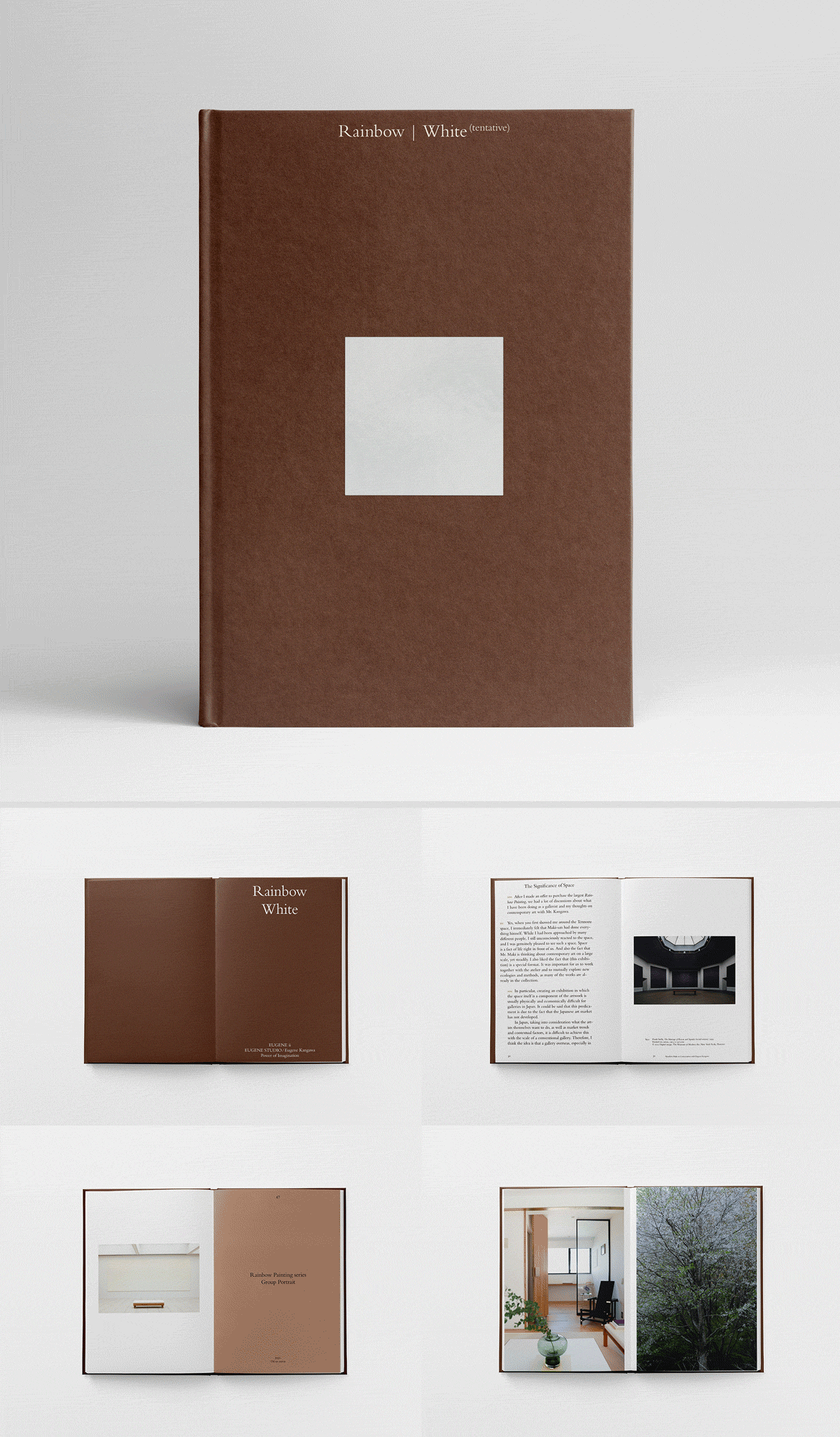
EUGENE ii Rainbow & White (tentative)
This volume documents the Rainbow Painting series and the White Painting series. The book includes numerous reproductions of the Rainbow Painting series’ detailed brushstrokes in near full-size, creating a sense of immersion similar to that of the works themselves. The images are accompanied by a conversation between Kangawa and MAKI Gallery director Masahiro Maki, as well as a reprint of an essay by American critic David Geers, whose writing has appeared in such publications as October and Frieze.
Published in June 2023
Publisher: MAKI Inc. / MAKI Gallery
Size: 252 × 182 mm
Specifications: Hardcover / 214 pages
Languages: English, Japanese
List price: ¥3,960 (tax included)
Reservations can be made via the following link.
Nadiff (Official) *International shipping
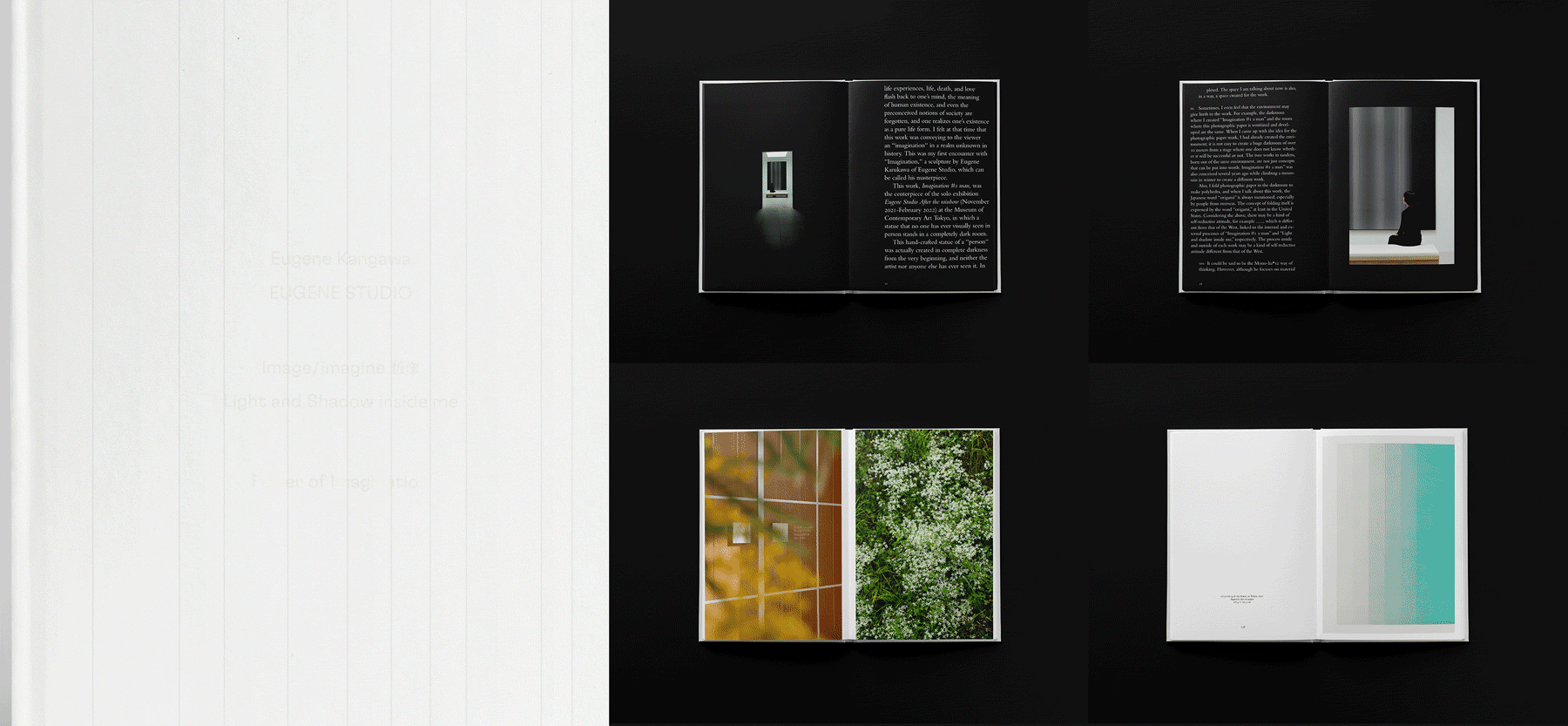
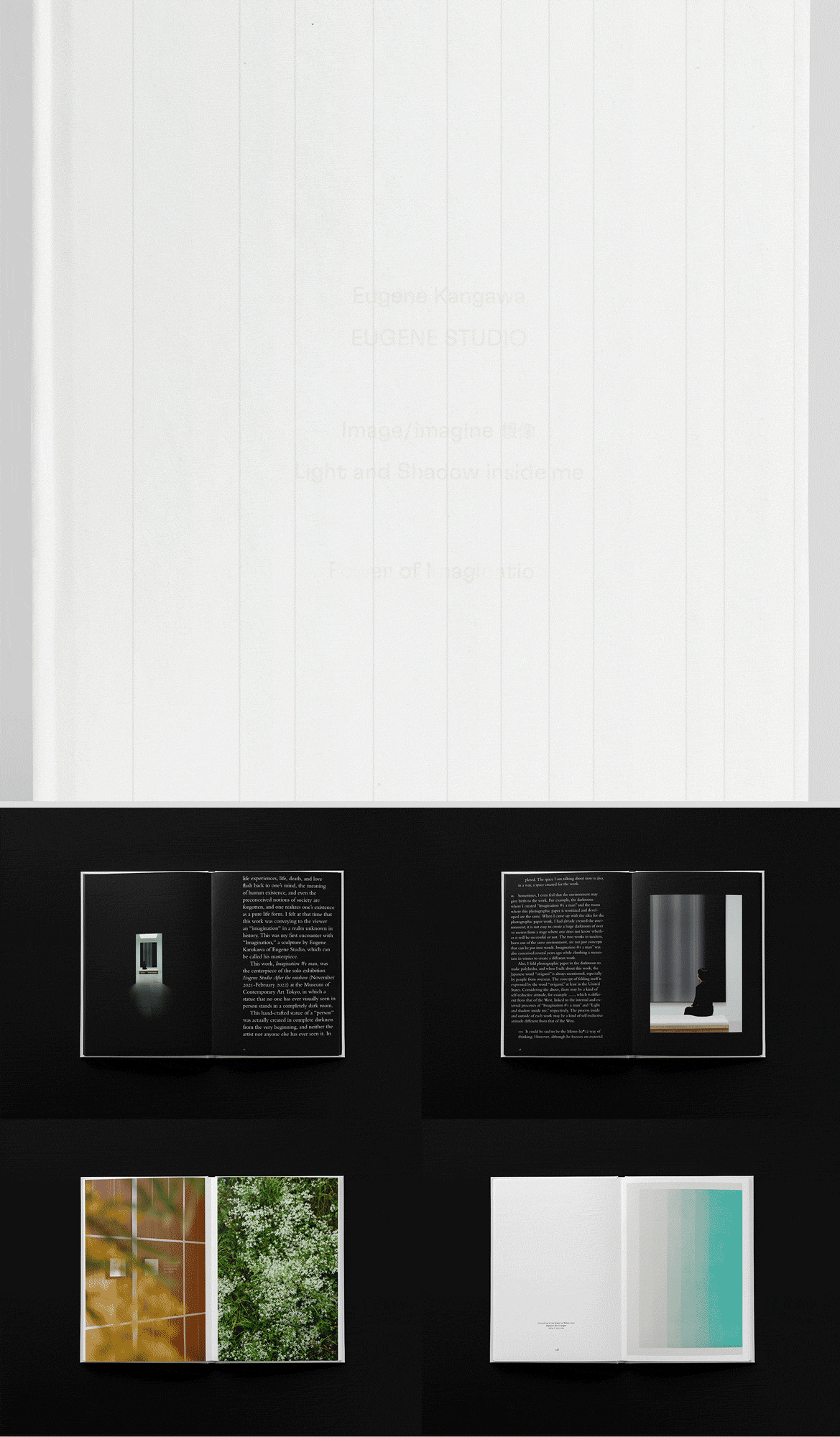
EUGENE i Image/Imagine #1 man & Light and shadow inside me
This volume includes a conversation between Kangawa and MAKI Gallery director Masahiro Maki about the work Image/Imagine #1 man, alongside excerpts from the artist’s own words. Also included are full-color reproductions of Kangawa’s signature two-dimensional series, Light and shadow inside me, as well as photographs of the scenery around his atelier.
Published in June 2023
Publisher: MAKI Inc. / MAKI Gallery
Size: 252 × 182 mm
Specifications: Hardcover / 208 pages
Languages: English, Japanese
List price: ¥3,960 (tax included)
Reservations can be made via the following link.
Nadiff (Official) *International shipping
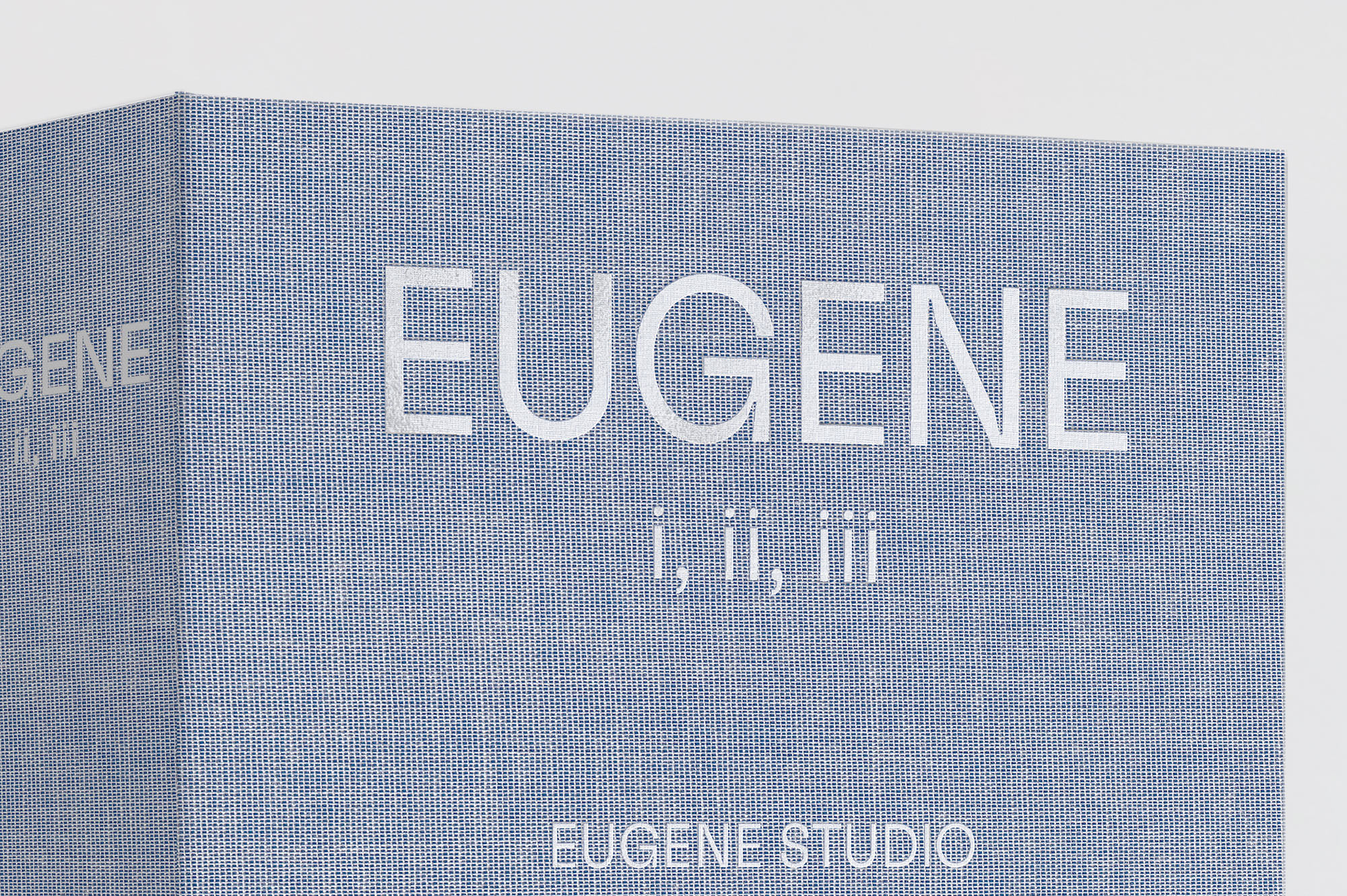
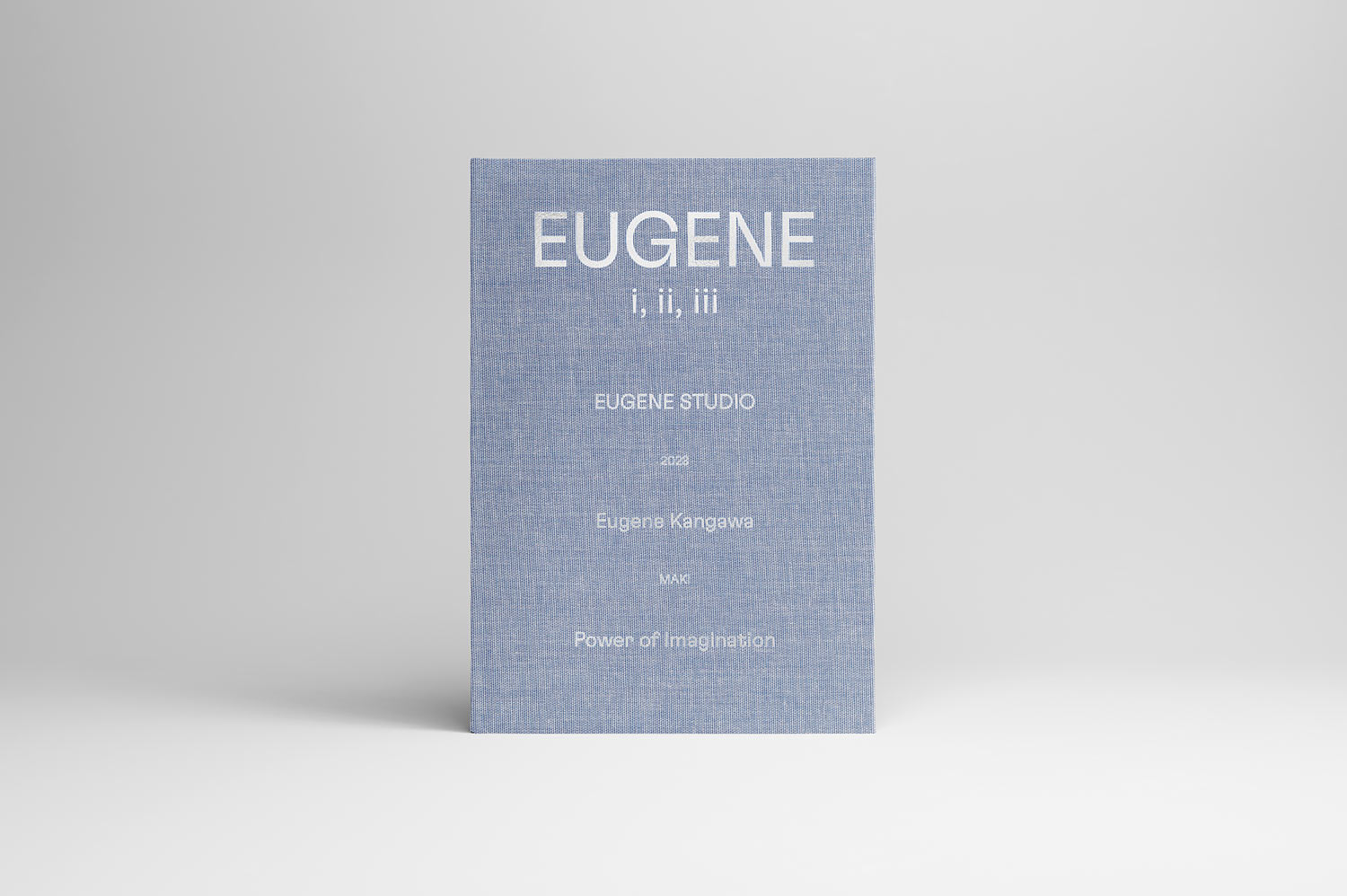
EUGENE i, ii, iii (3-volume special boxed set)
This special edition includes all three volumes, each dedicated to extensively documenting specific bodies of work in the artist’s oeuvre: EUGENE i Image/Imagine #1 man & Light and shadow inside me, EUGENE ii Rainbow & White (tentative), and EUGENE iii Goldrain. The books come encased in a collectible slipcase and are accompanied by an exclusive signed print.
Published in July 2023
Publisher: MAKI Inc. / MAKI Gallery
Box size: 260 × 191 × 78 mm
Specifications: Hardcover with silver foil hot-stamped box / i 208 pages, ii 214 pages, iii 128 pages
Languages: English, Japanese
List price: ¥18,700 (tax included)
Reservations can be made via the following link.
Nadiff (Official) *International shipping
The Artist’s Words
The catalog archives some of Kangawa’s past dialogues, interviews, and lectures. Below are some of the excerpts to be included.
From the lecture: “Possibilities of Imagination,” University of Tokyo, RCAST, 2022
The age of imagination.
... In the last few years, we have heard the word imagination more often. Why is it important now, even though it assumes the existence of unimaginable others and the limits of imagination? ... The difference between the monumental and the abstract, and in between ... These were the core of the After the rainbow*.
*Solo exhibition “EUGENE STUDIO After the rainbow” at the Museum of Contemporary Art Tokyo, 20 Nov 2021–23 Feb 2022.
From the interview: “EUGENE STUDIO After the rainbow”
... The Great East Japan Earthquake on March 11 made us aware of the existence of objects that are invisible but undoubtedly real. Around the same time, there was the emergence of an invisible community called SNS. As a result, many Japanese people, including myself, needed to expand their imagination in these two areas uncousiously. Therefore, I believe the “power of imagination” was unavoidably cultivated and installed in us unconsciously. In other words, I believe that the power of imagination was inevitably nurtured and installed in us as a result. Of course, they were also educated about nuclear power and radiation from a young age.
... Furthermore, due to the COVID-19 pandemic, the consciousness we acquired over ten years ago has spread worldwide. If there is something to be gained in these past ten years, and if we can connect what we have acquired to move forward, it would be ‘the power of imagination’.
From past dialogue:
... The starting point is painting, and certain words are the pillars. During my student days, on the way back from seeing Paul Klee with the artist Yukio Fujimoto, I heard the phrase “Painting is engineering.” Professor Fujimoto, who was in charge of the seminar, is not only a researcher of Duchamp but has also taught me about various aspects related to Duchamp. For example, Duchamp’s angles of portraits, and Paul Klee had already discovered the principle of mosaics before the war. Which I interpreted at the age of 20 as meaning that invention, rather than engineering, was what was important. Since then, these words have been at the core of, say, the two-dimensional world.
Painting is not only a possession of identity, special visual effects, and sensibility. While we are stuck in these things, it may be difficult to understand them. Still, invention, even in the smallest details, is the most important thing, and here whether something is ostensibly new or how it is displayed is no longer a major criterion ...
From past dialogue:
... In a darkroom, folding a continuous sheet of photographic paper into a polyhedron and exposing it to a momentary light. In other words, this is a two-dimensional work made only with light waves and a support medium. Therefore, this photographic paper* and oil painting do not seem to be very different. At times the folds become wrinkled due to humidity and their shadows become the painting. ...For example, how would it appear to bacteria? The reaction between silver and oxidation.
... For example, even a supercomputer needs mesh to operate particle adhesion in the air, and the mesh creates resolution in the cut surface.The operation of the three-dimensional space of light places a heavy load on the CPU. The amount of light in a three-dimensional space, the reflection, attenuation, and absorption rates due to the shape of the space and their fluctuations, and the myriad of equations that exist.
In that sense, this work is the reality of a complex three-dimensional simulation of light particles, no two of which are the same. And since these are reactions of light particles, there is almost no concept of resolution or enlarging here.
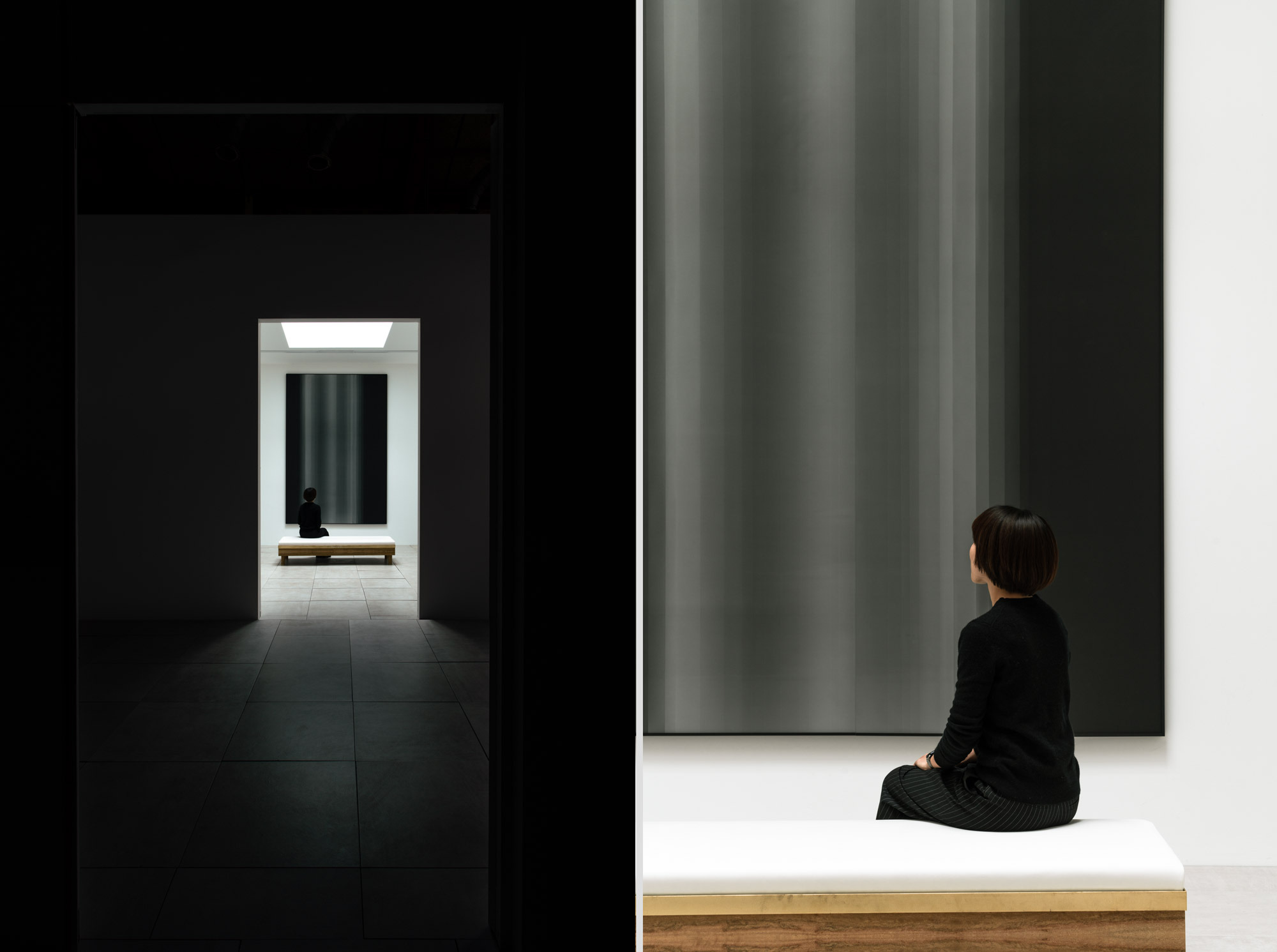
Light and shadow inside me, 2023
300 × 202 cm
Gelatin silver print (photogram)
From past lecture:
“No focus, non-parametric.”
... During the museum exhibitions before ..., a difficult situation would have persisted if one were to think about “focus” (focal point). All the works were optically unfocused, which is one common thread that runs through all the works. One artificial intelligence researcher, who toured the exhibition with me, described this state of affairs as a metaphorical non-parametric state of affairs. ...
... I have a hypothesis. When people are in a visual situation where they cannot focus on what they need to see, their brains start ‘imagining’ in conjunction with their vision, creating a special state. This is difficult to happen in everyday life. This may have been one of the languageless criteria that formed the basis of the theories of several important branches of painting – Abstract Expressionism, Impressionism earlier on, and several other Japanese movements. The brain’s response to things that are easy to understand is small. Time becomes shorter, too. In contrast, unfocused things trigger the brain to produce unusual movements.
One of the objectives of my solo exhibition at the museum then was to see how these hypotheses would play out – a slightly different model of eye movement due to multi-point composition and face blindness. ... If I talk about the specific structure between the works, for example, first the white painting series, then the sea garden, then the rainbow painting after the passage, and then “Image/Imagine #1 man,” it’s that kind of composition.
Series of “White Painting” has no place to focus. “Critical” is a mirror with an endless horizon, so the eye has to look far away. Rainbow also needs time to come into focus. And in the ‘imagination’ of a statue in total darkness, the focus disappears completely. The focus comes and goes, either out of focus or the point of view is far away, and eventually, the focus disappears.
... The researcher and I discussed the possibility that this is one of the extremes of human thinking, even from the point of view of artificial intelligence. In contrast, extremely simple reactions such as responding to symbols and words, finding similarities are simple and thoughtful sensors as reactions, so there are already many technological substitutes for them. They are unique to humans, if not unnecessary. I don’t know if non-parametric is the right word, but this was an interesting concept.
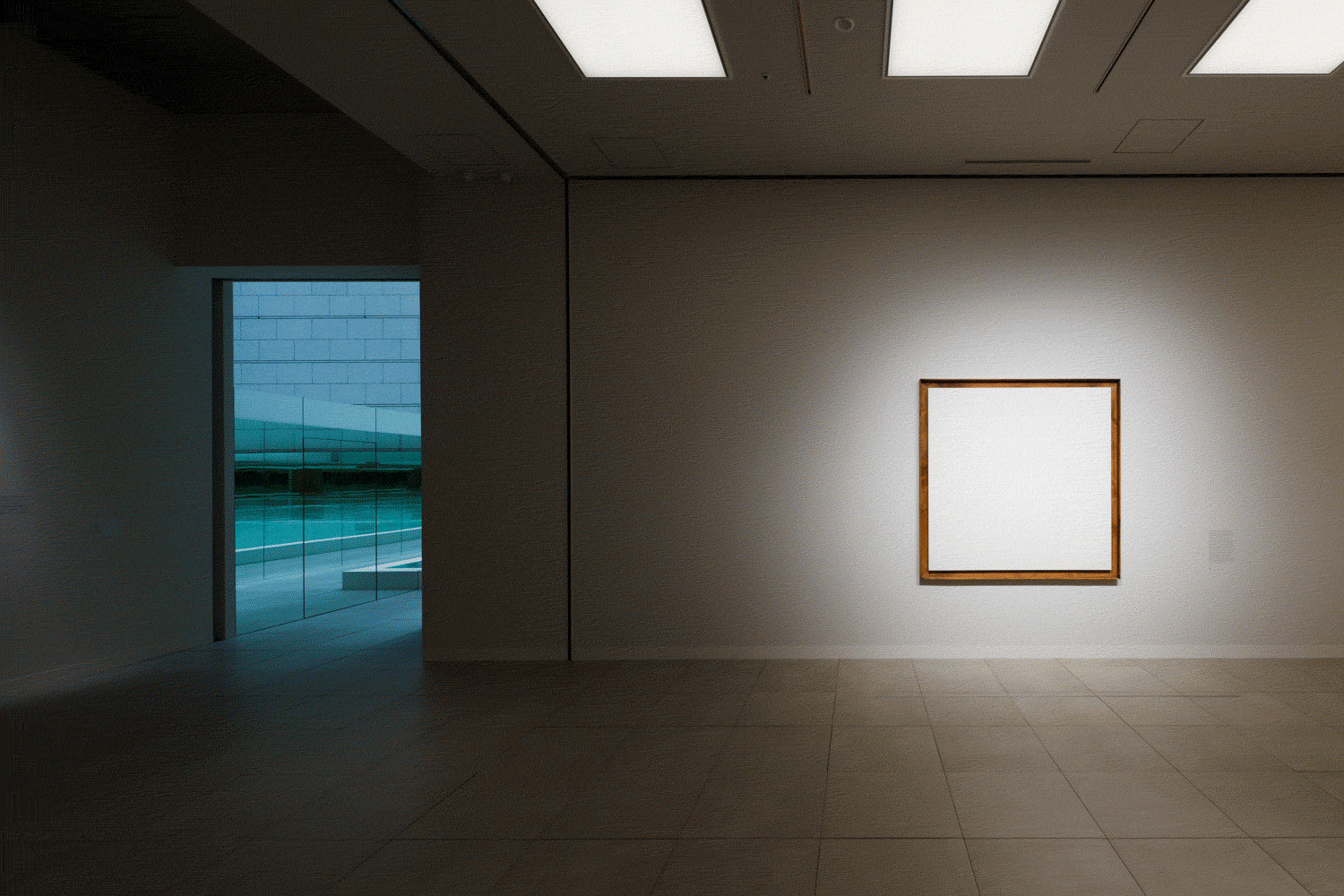
From past lecture:
...There are no images or symbols there that are too strong. And there, the subjective act of imagination can be born, over a long period of time. This is how relationships are formed. That there is room for each to intervene. This swelling is the core of the next society ... Journalism and artworks have different characteristics and essential roles.
From past lecture:
(Question from an audience member) ... Your “White Painting” Series, has been introduced as a textbook example in prep schools and universities. How did you come up with such a work?
(Kangawa) ... One thing from a completely different story. Pardon me for talking about artificial intelligence, but suppose a moment comes along that could be reproduced with every possible detail, including human beings. What do you think would be the only thing that would not be reproduced until the very end?
Few people can answer this in words, but it is “the time it has held.” I think that those who are natively aware of the advent of things like AI Singularity, AI chatbot, and Midjourney, for example, subconsciously understand this answer. The complex situation we and they are facing right now is on a different dimension from the past “proliferation of images” that was repeatedly mentioned from the 80s until a few years ago
In this period, objects and phenomena without time and facts lose their criteria.In terms of artworks, all reproducible visuals, contexts, and staging, regardless of the complexity and novelty of their expression and depiction, lose their motive for existence. This is because they appear without limit. This would be a sort of shot in the arm.
For example, in “White Painting,” the facts and time that span here cannot be duplicated, and this is not a matter of technique, but it is the subject and form in itself.
... NFT-like? NFT will be an extension of conceptual art. Although still few in number, there are other such artists and works, and there are likely to be more in the future.
From past dialogue:
... Among various inquiries and proposals, (this exhibition) was also refreshing in terms of its format. For example, the fact that it was an attempt that took several years, the catalog for each work, and the seamless connection with the studio – all of these were done in a natural way. The space itself has a scale that doesn’t feel like a typical gallery.
From past dialogue:
(On the two places)
... When I think about the techniques/approaches of the exhibition, this is a natural approach. The studio was created with the artworks leading the way, initially unconsciously, but ... While talking to visitors from museums and collectors, both international and local, about an unparalleled place, it was becoming an organic state of being, different from galleries, museums, and even alternative spaces. This way of doing things in my absence is a semi-public sphere, a spontaneous, grounded ecology.
Information
1. MAKI Gallery (Tennoz, Tokyo)
No reservation required.
- Exhibition title:
- EUGENE STUDIO / Eugene Kangawa: Power of Imagination Part 1/3
- Dates:
- Friday 2 June - Saturday 5 August 2023
- Venue:
- MAKI Gallery / Tennoz, Tokyo
TERRADA ART COMPLEX I, 1-33-10 Higashi-Shinagawa, Shinagawa-ku, Tokyo 140-0002
(Google Maps) - Closed:
- Sundays, Mondays, and Tuesday 4 July
- Opening hours:
- 11:30-18:00
- Entry fee:
- Free (Reservations not required for MAKI Gallery)
- Host:
- MAKI Gallery
- In association with:
- Stanley Electric Co., Ltd.
- Website:
- https://vip-mkg-eugenestudio-kangawa-231.makigallery.com/
- *Talks and performances are scheduled to be held over the exhibition period.
*Entry restrictions may be in place to enhance the artwork viewing experience. Thank you for your understanding in advance.
Please visit the website for the latest information.
Access Information
- MAKI Gallery /
Tennoz, Tokyo - TERRADA ART COMPLEX I, 1-33-10 Higashi-Shinagawa, Shinagawa-ku, Tokyo 140-0002
(Google Maps) - Tel:
- Tennoz: 03-6810-4850 / Omotesando: 03-6434-7705
- E-mail:
- info@makigallery.com
Information
2. Special Venue:
EUGENE STUDIO Atelier iii
Reservations required.
- Reservations:
- *As the general pre-booked slots have sold out, new extra time slots (10am and 5pm) will be set up in turn.
Reservations can be made via the following link. - URL:
- https://artsticker.app/events/3864